Articles tagged spring-boot
Secure Secrets with Spring Cloud Config and Vault

In 2013, GitHub released a search feature that allows users to scan code in all public repositories. A day after the release, however, they had to partially shut it down. It was speculated that the shutdown was because the feature allowed any user to search for all kinds of secrets stored in GitHub repositories. Later, in 2014, data on 50,000 Uber drivers was stolen. It seems someone got access to the company’s database using login...
Integrate React Native and Spring Boot Securely

React Native is a mobile app framework from Facebook. It allows you to quickly develop apps using React’s API and deploy them to iOS and Android. It allows you to quickly refresh the apps when you make changes and generally offers a pleasant experience for web developers. React Native for Web is a recent addition to the React Native family. It allows you to run your app in a browser and enjoy the browser’s built-in...
Build a Simple CRUD App with Spring Boot and Vue.js
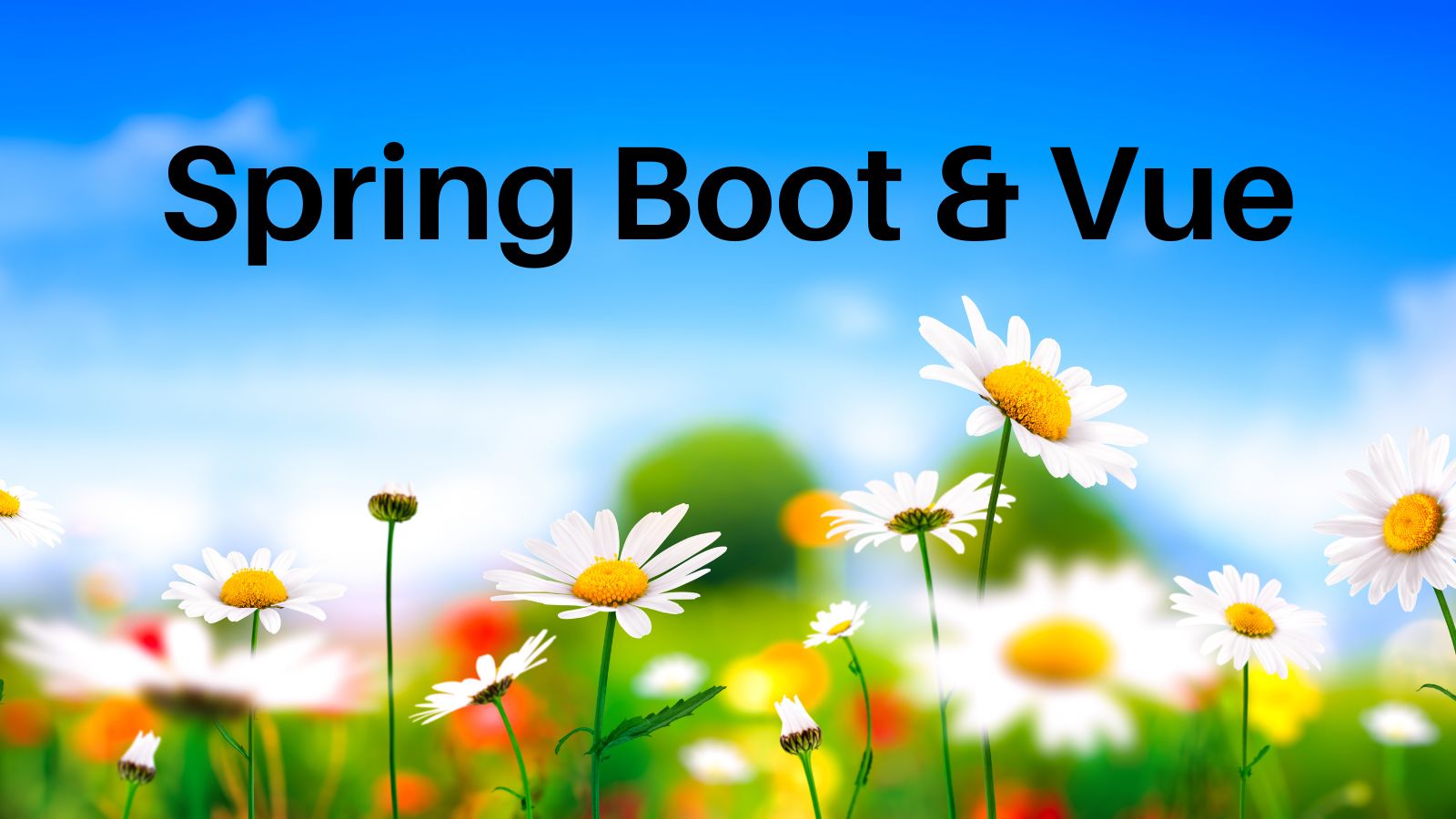
You will use Vue and Spring Boot to build a todo list web application. The application will include CRUD abilities, meaning that you can create, read, update, and delete the todo items on the Spring Boot API via the client. The Vue frontend client will use the Quasar framework for the presentation. OAuth 2.0 and OpenID Connect (OIDC) will secure the Spring Boot API and the Vue client, initially by using Okta as the security...
Get Started with Spring Boot and SAML

Spring is a long-time friend to enterprise companies throughout the world. When Spring Boot came along in 2014, it greatly simplified configuring a Spring application. This led to widespread adoption and continued investment in related Spring projects. One of my favorite Spring projects is Spring Security. In most cases, it simplifies web security to just a few lines of code. HTTP Basic, JDBC, JWT, OpenID Connect/OAuth 2.0, you name it—Spring Security does it! You might...
How to Deploy Java Microservices on Amazon EKS Using Terraform and Kubernetes

When it comes to infrastructure, public clouds are the most popular choice these days, especially Amazon Web Services (AWS). If you are in one of those lucky or unlucky (depending on how you see it) teams running microservices, then you need a way to orchestrate their deployments. When it comes to orchestrating microservices, Kubernetes is the de-facto choice. Most public cloud providers also provide managed Kubernetes as a service; for example, Google provides Google Kubernetes...
Use React and Spring Boot to Build a Simple CRUD App

React was designed to make it painless to create interactive UIs. Its state management is efficient and only updates components when your data changes. Component logic is written in JavaScript, meaning you can keep state out of the DOM and create encapsulated components. Developers like CRUD (create, read, update, and delete) apps because they show a lot of the base functionality you need when creating an app. Once you have the basics of CRUD completed...
Cloud Native Java Microservices with JHipster and Istio

Microservices are not everyone’s cup of tea, and they shouldn’t be. Not every problem can or should be solved by microservices. Sometimes building a simple monolith is a far better option. Microservices are solutions for use cases where scale and scalability are important. A few years ago, microservices were all the rage, made popular, especially by companies like Netflix, Spotify, Google, etc. While the hype has died down a bit, genuine use cases still exist....
Run Microservices on DigitalOcean with Kubernetes

Cloud adoption continues to increase rapidly worldwide, and not only in the software industry. Every year more and more companies move their applications to the cloud. In the last JHipster community survey, from December 2021, participants valued JHipster’s ability to get them to production faster, and requested more tutorials on deployment to cloud platforms. DigitalOcean is among the most popular “other” cloud vendors, according to some surveys. This post is a quick walk-through of the...
Build Secure Ionic Apps with Angular and JHipster

Ionic is a framework for building mobile apps with web technologies that look and act like native apps. Because they’re built with web technologies (HTML, JavaScript, and CSS), you can also deploy your Ionic apps as single-page applications. Or, even better, as progressive web apps (PWAs) that work offline. Ionic supports the big three web frameworks: Angular, React, and Vue. Once you’ve written your app, you can deploy it to a simulator or device with...
Use Thymeleaf Templates with Spring WebFlux to Secure Your Apps

The Thymeleaf library has been around at least for 10 years and it is still actively maintained as of today. It is designed to allow stronger collaboration between design and developer teams for some use cases, as Thymeleaf templates look like HTML and can be displayed in the browser as static prototypes. In this tutorial you will learn how to create a simple Spring WebFlux application with Thymeleaf and Okta OIDC authentication, addressing the security...
Introducing Spring Native for JHipster: Serverless Full-Stack Made Easy

Over the years, I’ve developed a lot of Java applications. I started writing Java code in the late 90s and spent several years doing Java before I tried another server-side language. I was impressed when I first tried building apps in Ruby on Rails, Python, and Node.js - they all started super-fast! Starting fast is cool, but we in the Java community have often asked, does it perform over time? The Java Virtual Machine is...
Better Integration Testing With Spring Cloud Contract

Spring Cloud Contract was created as a way to help test interconnected microservices. Generally speaking, there are two options when testing microservices: 1) you can deploy the entire mesh of services in your integration tests and test against that, or 2) you can mock each service in your integration tests. Both of these options have serious drawbacks. The first, deploying the entire mesh of microservices for testing, has the obvious drawback of being difficult, if...
Three Ways to Run Your Java Locally with HTTPS

If you’re developing a web application, chances are you want your dev environment as close to production as possible. One of the often-overlooked differences between local development and production servers is the use of Transport Layer Security (TLS), or Hypertext Transfer Protocol Secure (HTTPS). In this post, I’ll cover three different options to get your local Java app running with TLS in no time! Table of Contents Start with a simple Java application HTTPS using...
Full Stack Java with React, Spring Boot, and JHipster

If you search for “Full Stack Java” on the internet, you’ll likely find a lot of recruiting, courses, and jobs. Being a full stack developer can be exciting because you can create the backend and frontend of an app all by yourself. There is business logic and algorithms as well as styling, making things look good, and securing everything. It also pays pretty well. Today, I’m going to show you how you can be a...
Learn How to Build a Single-Page App with Vue and Spring Boot

In this tutorial, you are going to create a single-page application (SPA) that uses a Spring Boot resource server and a Vue front-end client. You’ll see how to configure Spring Boot to use JSON Web Tokens (JWT) for authentication and authorization, with Okta as an OAuth 2.0 and OpenID Connect (OIDC) provider. You’ll also see how to bootstrap a Vue client app with the Vue CLI and how to secure it using the Okta Sign-In...
Session Clustering for OAuth 2.0 Applications

A common OAuth 2.0 question we get: "How do I deal with OAuth in a load-balanced application?" The short answer: There’s nothing specific about session clustering for OAuth. The longer answer is—you likely still need to worry about cluster session management. This post will discuss how an OAuth login relates to your application’s session. And we’ll build a simple, secure, load-balanced application to demonstrate. Note: In May 2025, the Okta Integrator Free Plan replaced Okta...
Spring Native in Action with the Okta Spring Boot Starter
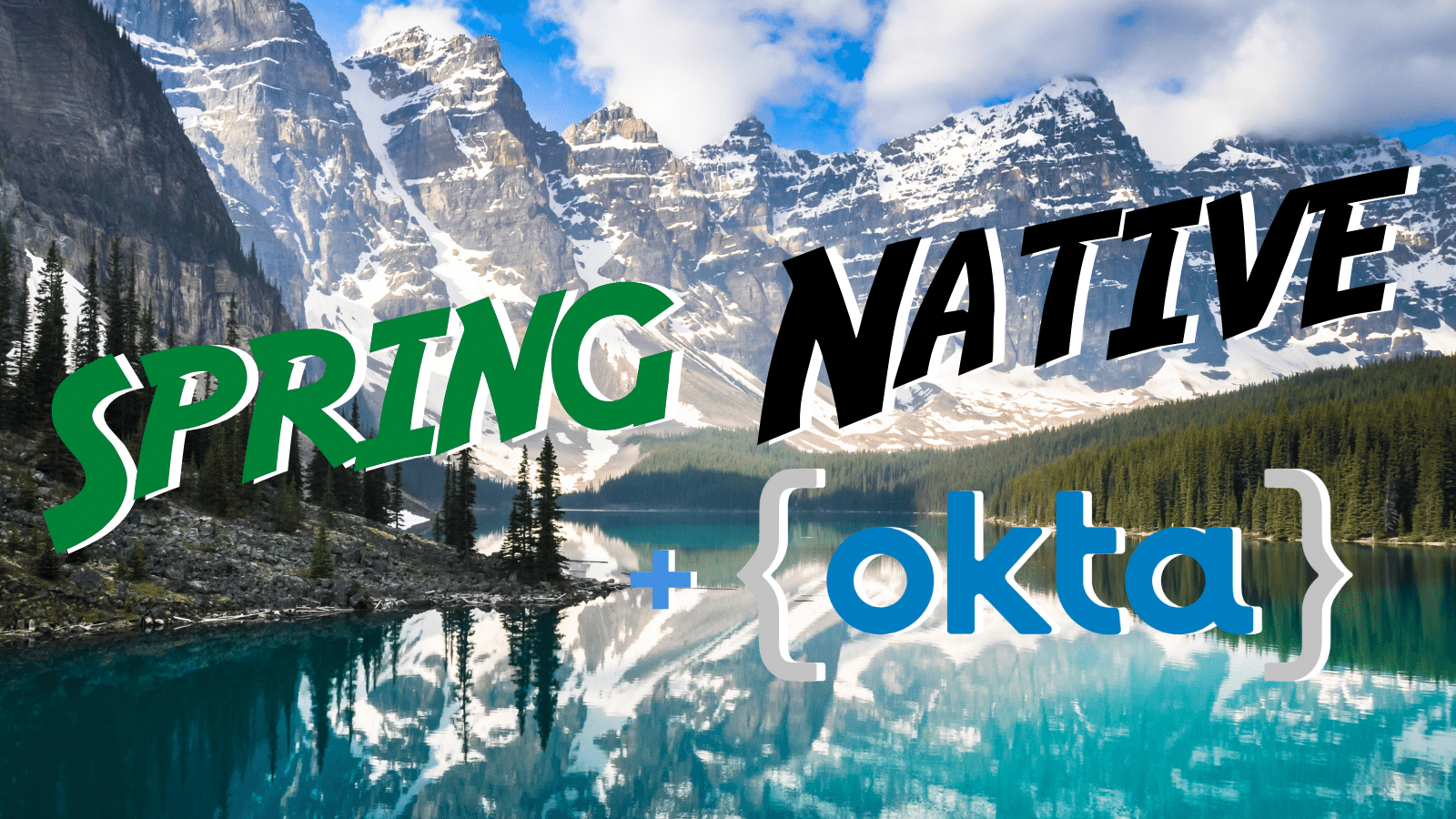
In the fall of 2020, the Spring team released a new experimental Spring Native project that gave Spring developers hope for faster startup times. Spring Native is all about converting your Spring applications to native executables. It leverages GraalVM to make it happen. This announcement was huge because the new kids on the block, Micronaut and Quarkus, produced native executables by default. I was really excited about Spring Native when I first heard about it....
How to Prevent Reactive Java Applications from Stalling

Modern applications must work smoothly on high loads and with a high number of concurrent users. Traditional Java applications run blocking code and a common approach for scaling is to increase the number of available threads. When latency comes into the picture, many of these additional threads sit idle, wasting resources. A different approach increases efficiency by writing asynchronous non-blocking code that lets the execution switch to another task while the asynchronous process completes. Project...
Faster Spring Boot Testing with Test Slices

We know unit testing is a vital part of the software development process. We also know us developers love to debate techniques, frameworks, strategies, and how different layers and components need testing. Unit tests are the most valuable when they are stable, fast, and reproducible. Spring Boot is known to reduce boilerplate code and make development extremely efficient, but it can come with a cost when it comes down to the testing. Without prior optimization,...
Build Native Java Apps with Micronaut, Quarkus, and Spring Boot

Java has been able to invoke native programs on an operating system for decades. Invoking native programs is often done using JNI (Java Native Interface) and JNA (Java Native Access). In the last few years, Java has also gained the ability to run JVM apps as native apps. That is, they’re binary executables that have no dependency on the Java runtime. This is huge! Mostly because it gives Java apps the ability to start up...
Kubernetes to the Cloud with Spring Boot and JHipster
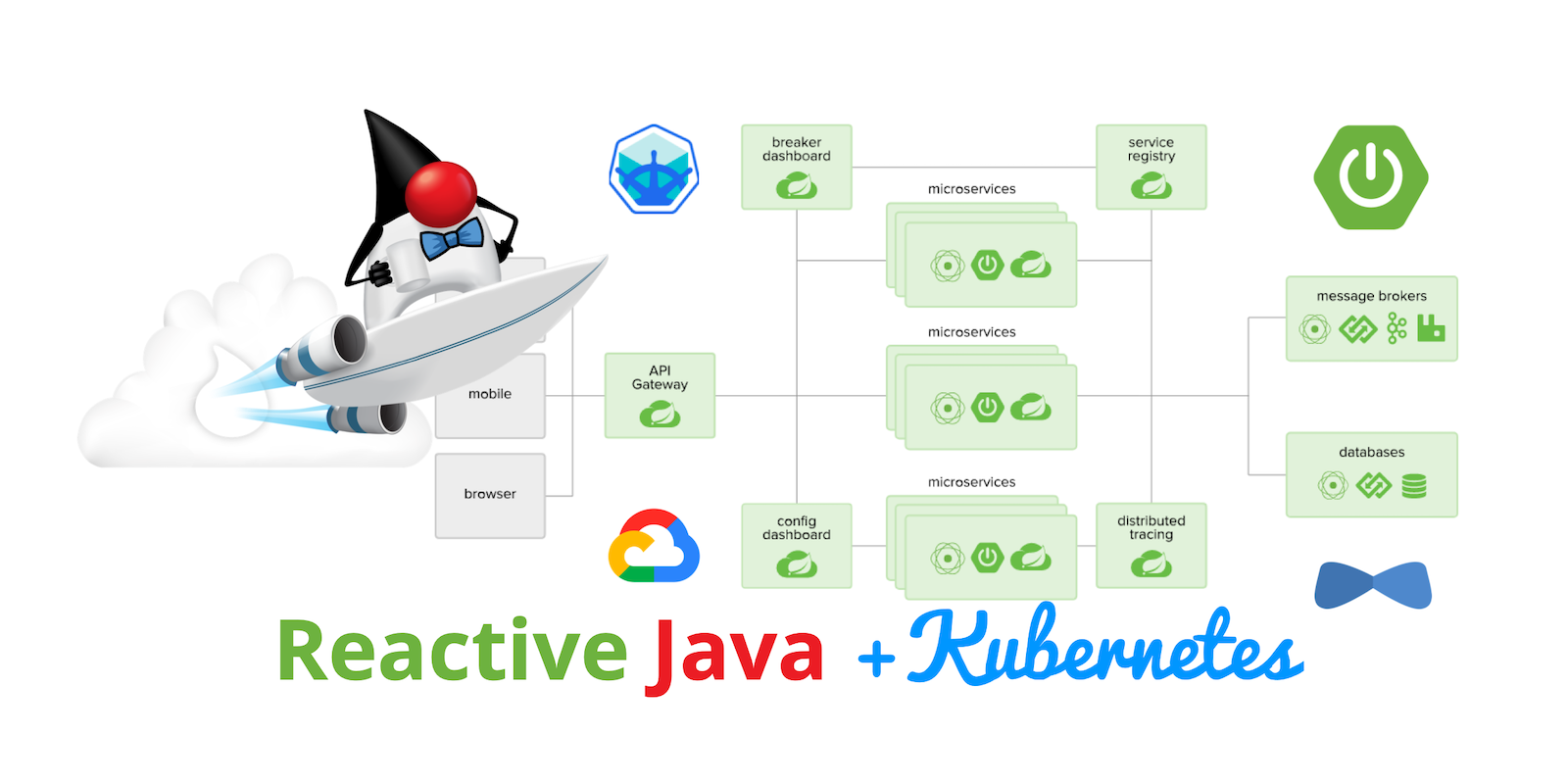
When your business or application is successful, it needs to scale. Not just technology-wise, but human-wise. When you’re growing rapidly, it can be difficult to hire developers fast enough. Using a microservices architecture for your apps can allow you to divide up ownership and responsibilities, and scale teams along with your code. Kubernetes is an open-source platform for managing containerized workloads and services. Kubernetes traces its lineage directly from Borg, Google’s long-rumored internal container-oriented cluster-management...
R2DBC and Spring for Non-Blocking Database Access

Reactive APIs are a powerful way to handle and serve large amounts of data and large numbers of requests in a web application. They rely on a “server-side event” model in which the client (e.g. your browser) subscribes to “events” on the server, and the server “pushes” events to the client as they become available. For simple CRUD applications this is not very useful. However, in situations with millions of “subscribers” it can offer improved...
How to Use Client Credentials Flow with Spring Security
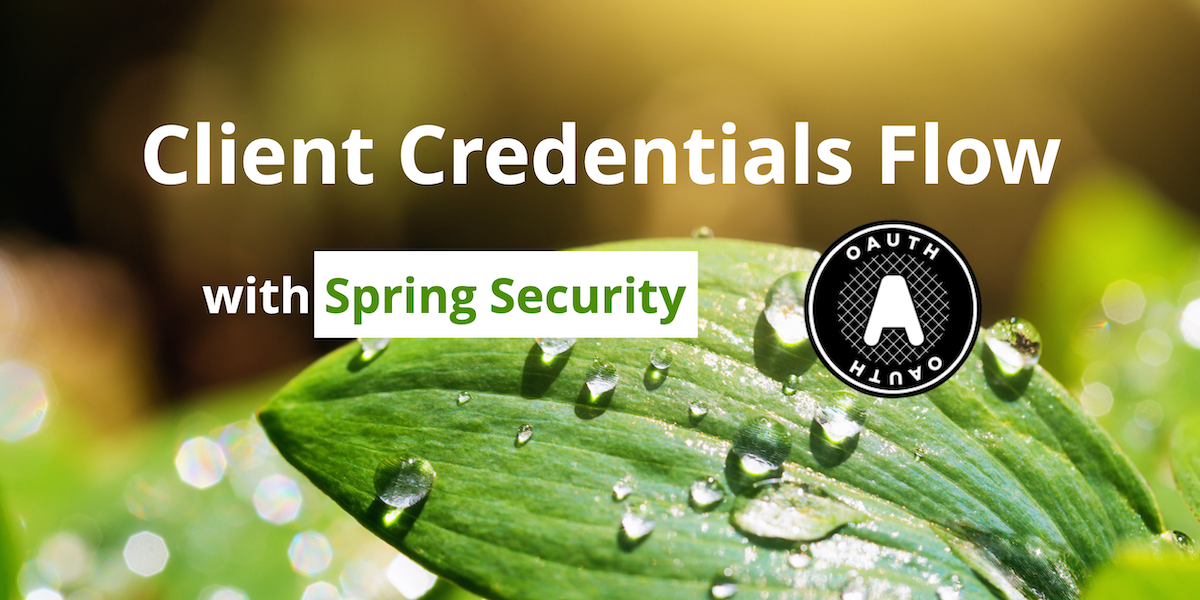
The client credentials grant is used when two servers need to communicate with each other outside the context of a user. This is a very common scenario—and yet, it’s often overlooked by tutorials and documentation online. In contrast, the authorization code grant type is more common, for when an application needs to authenticate a user and retrieve an authorization token, typically a JWT, that represents the user’s identity within the application and defines the resources...
Use Kong Gateway to Centralize Authentication
A customer once asked me: “Hey – Can Okta integrate with Kong?” Spoiler alert: You totally can integrate Kong with Okta using its OpenID Connect plugin. Still stuck wondering what an API gateway even is? Here’s a metaphor that works for me: You know that sci-fi movie trope in which you have a centralized hub that “jumps” you to other places in the galaxy? In that kind of system all the screening and security happens...
Reactive Java Microservices with Spring Boot and JHipster

Java has been at the forefront of microservice architectures since they came to prominence a few years ago. It’s a popular language with well-known, high-quality frameworks, like Spring Boot, Spring Cloud, Spring Data, and Spring Security. Spring Boot 2.0 introduced a new web framework called Spring WebFlux. Previous versions of Spring Boot only shipped with Spring MVC as an option. WebFlux offers a way for developers to do reactive programming. This means you can write...
How to Docker with Spring Boot
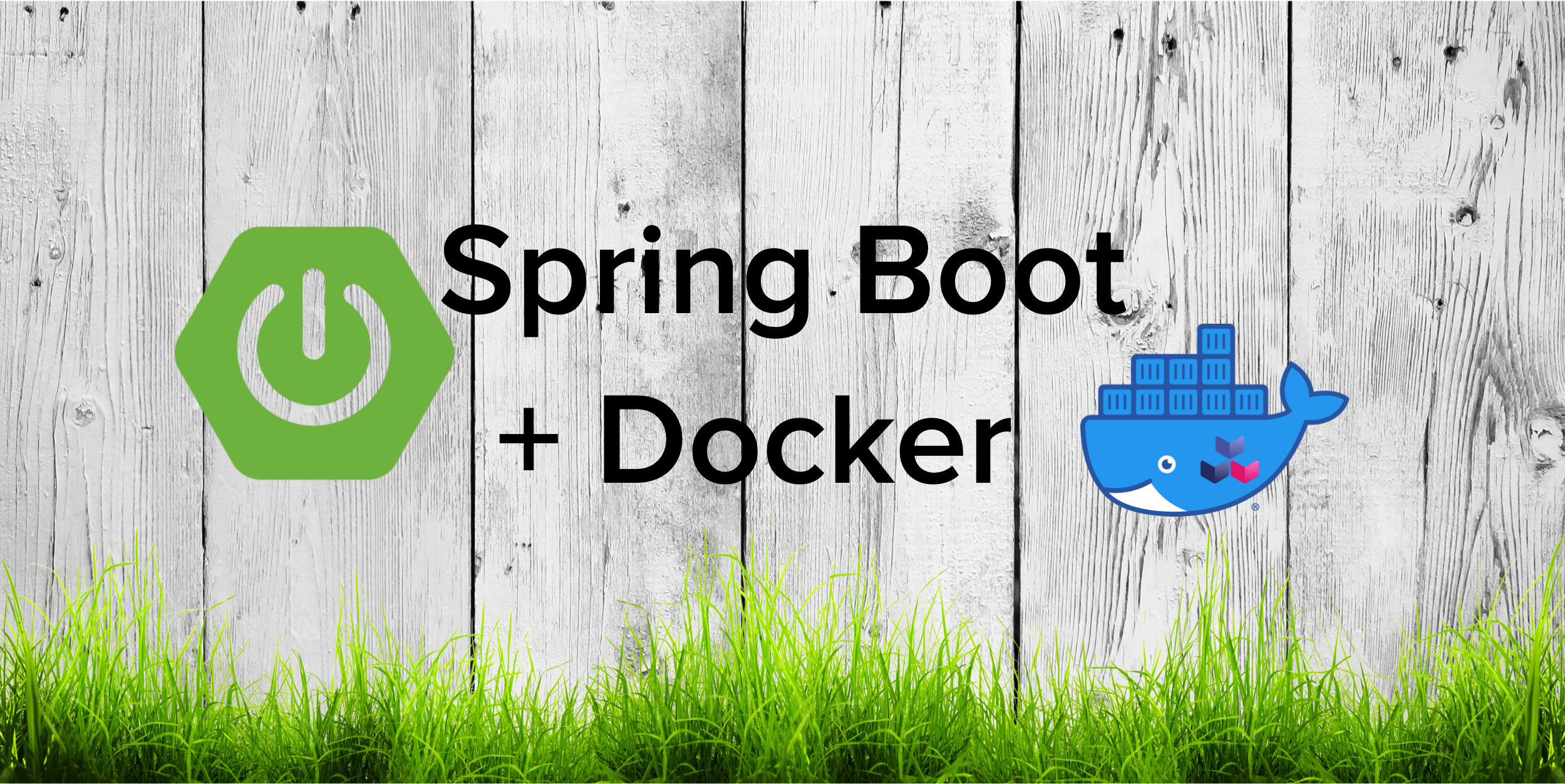
Those of you reading this have certainly heard of Docker. After years of hype, it has become the somewhat standard technology for everyday DevOps operations. It greatly helped to simplify deployments and testing by creating efficient, immutable images of the applications which are working in their own silo. More efficient placement of applications has made this technology central for cloud applications which is why it has gotten so much attention in recent years. Docker has...
Scaling Secure Applications with Spring Session and Redis

Spring Boot and Spring Security have delighted developers with their APIs for quite some time now. Spring Security has done an excellent job of implementing OAuth and OpenID Connect (OIDC) standards for the last few years. If you’re using Spring Security’s default authorization code flow with OIDC, it’ll establish a session on the server and serve up old fashion session cookies. If you want to scale your services, you’ll need to share session information. This...
Spring Cloud Config for Shared Microservice Configuration
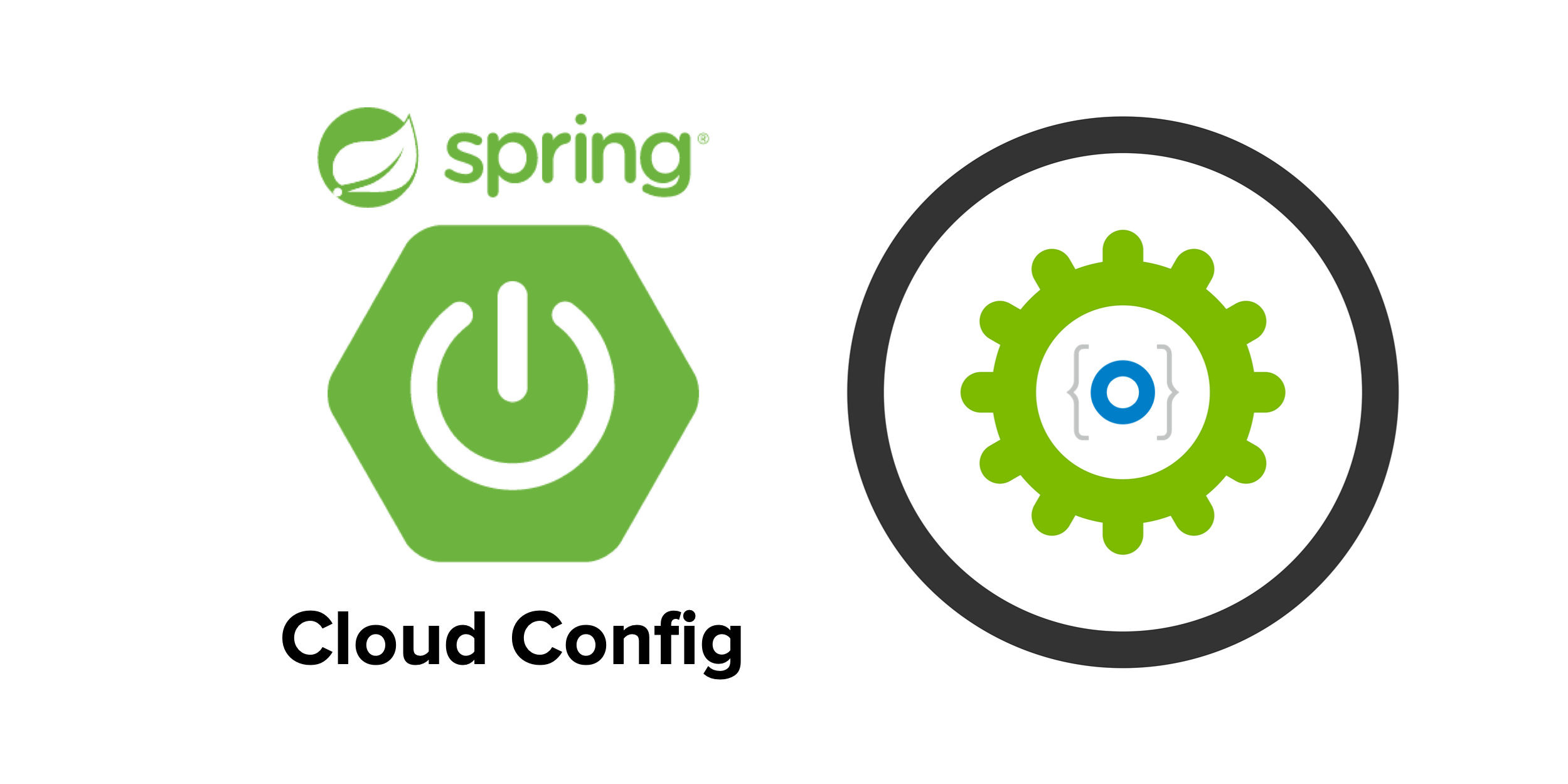
The microservice architecture pattern, in which business functionality is distributed among many small atomic applications as opposed to one or two monolithic chunks, is very powerful and in wide use across large and small tech companies. Each piece has a narrow, well-defined task and communicates with other services via a shared channel (usually REST APIs). The benefits of adopting a microservice architecture include: Easier maintenance and development of applications: developers and teams can focus on...
Spring Boot and Okta in 2 Minutes
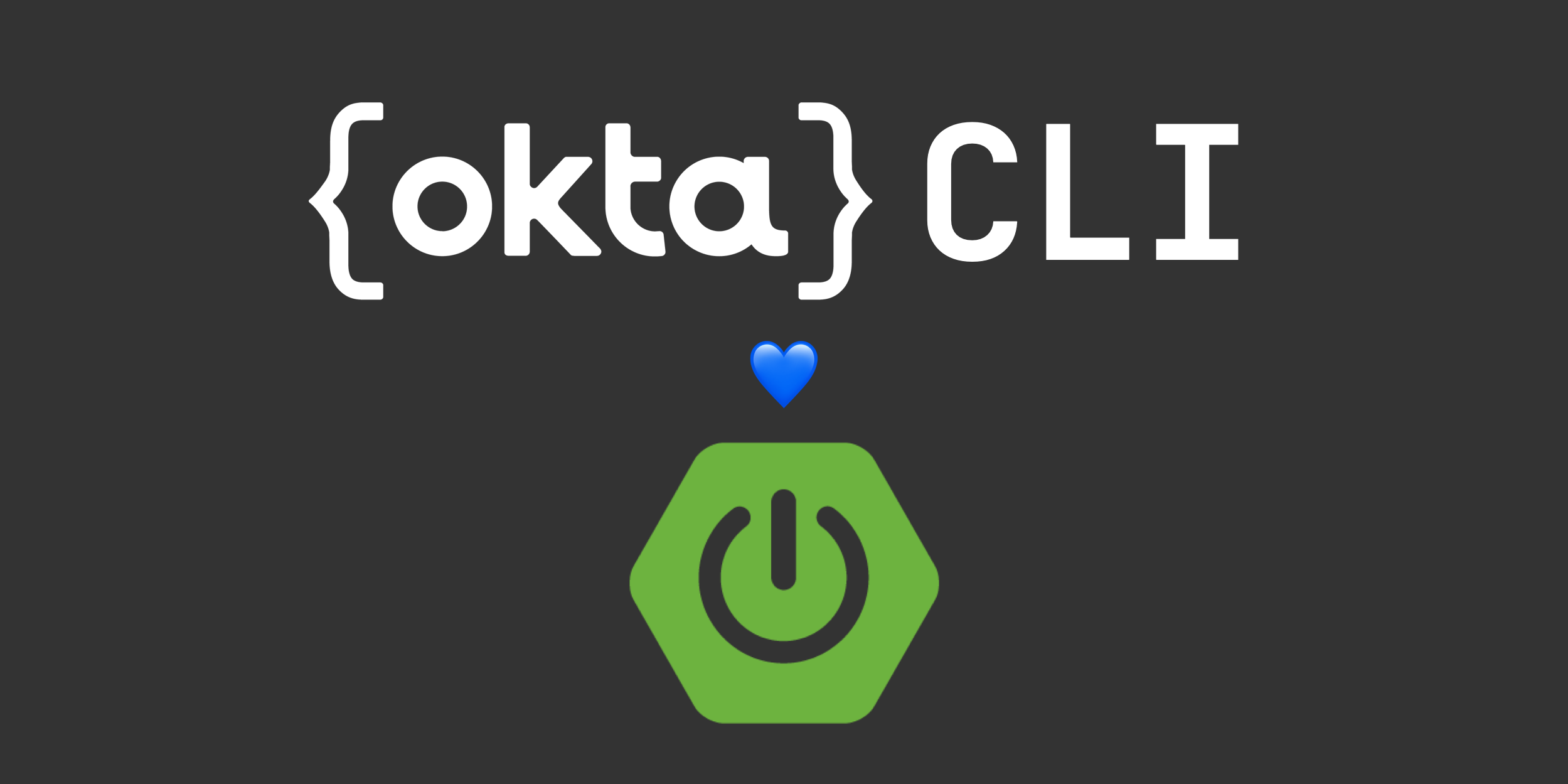
The Okta CLI is a new tool we’ve created here at Okta. It’s designed to streamline the process of creating new Okta accounts, registering apps, and getting started. Wwwhhaaattt, you might say?! That’s right, it’s super awesome! To show you how much fun it is, I created a screencast that shows you how to use it. This video puts your settings in src/main/resources/application.properties. We’ve since changed the default behavior to use spring-dotenv. For those that...
Build a Secure Spring Data JPA Resource Server
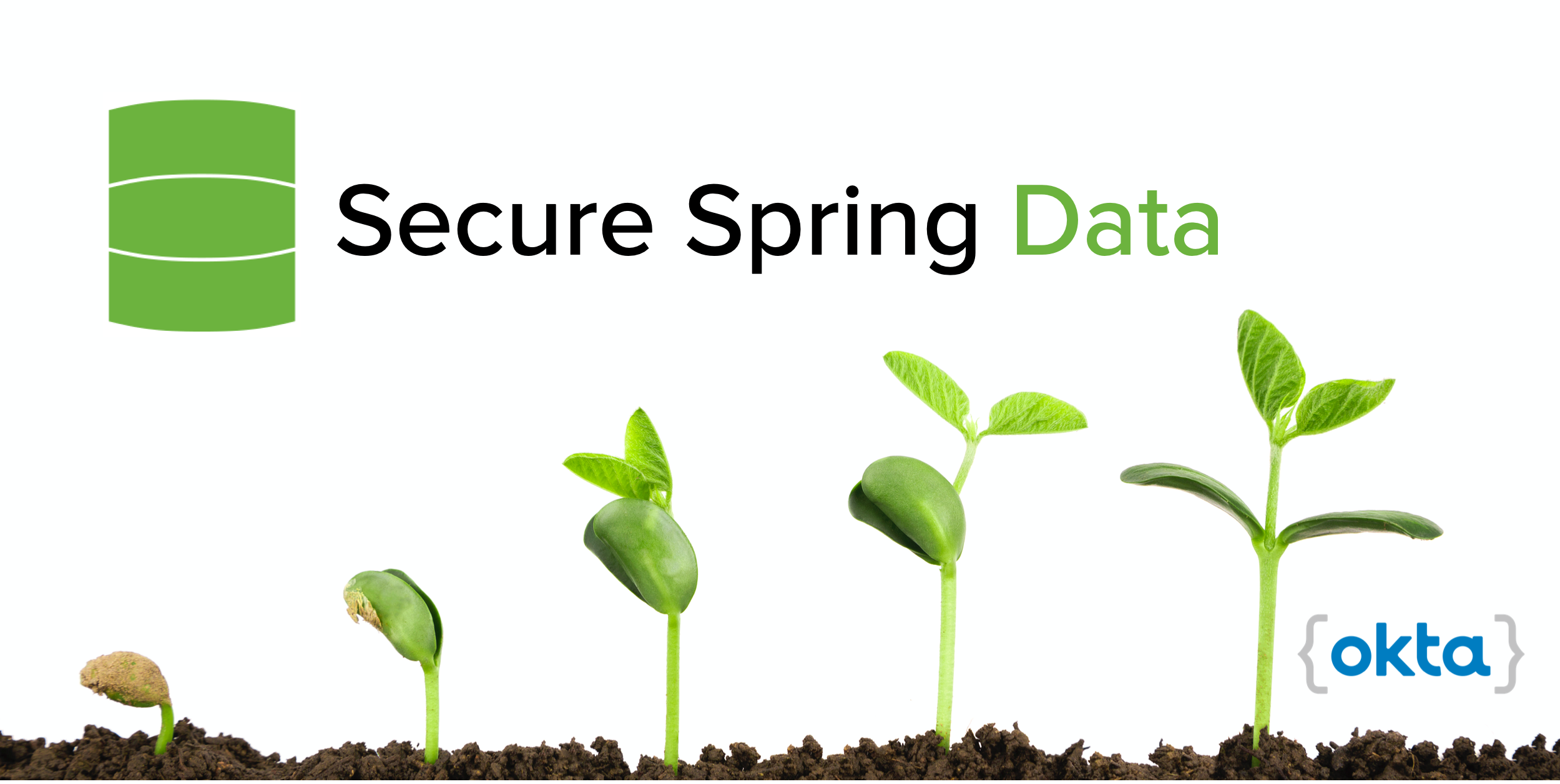
In this tutorial, you’re going to use Spring Boot and Spring Data to build a fully functioning web service with ridiculously little effort. You’re also going to use Okta to secure the web service using professional, standards-compliant OIDC JWT authentication. All of this will be bootstrapped by the Okta CLI. Before you get started on the actual application, however, let’s take a look at Spring Data for a moment. Table of Contents What is Spring...
A Quick Guide to Security with Vaadin Fusion and Spring Boot

Building a web application involves a lot of moving pieces. You have a backend server handling API calls, a frontend application running business logic, and you need to somehow make sure both are in sync and secure. In this blog post, you’ll learn how to use Vaadin Fusion, Spring Boot, and Okta to create a full-stack web application with authentication. Specifically, you’ll learn how to: Create a Spring Boot-based Vaadin Fusion app Secure server endpoints...
Spring Security SAML and Database Authentication

Spring Boot is a ubiquitous and well-supported suite of tools for developing web applications in Java. Database authentication, in which credentials identifying authorized users are stored in a database accessible by the application, is maybe the most common and straightforward method of authenticating users. SAML is a well-supported open standard for handling authentication between identity providers and service providers. Configuring SAML authentication in Spring Security is a common topic, and examples are easy to come...
Test in Production with Spring Security and Feature Flags

Okta is an Identity and Access Management platform. The TL;DR: you offload the responsibility for secure authentication and authorization to Okta so you can focus on the business logic of the app you’re building. Okta and Spring Boot already go together like peanut butter and chocolate. Add in feature flags care of Split, and you can test new capabilities for your app without having to redeploy. That’s testing in production the smart way! And, you...
Easy Session Sharing in Spring Boot with Spring Session and MySQL
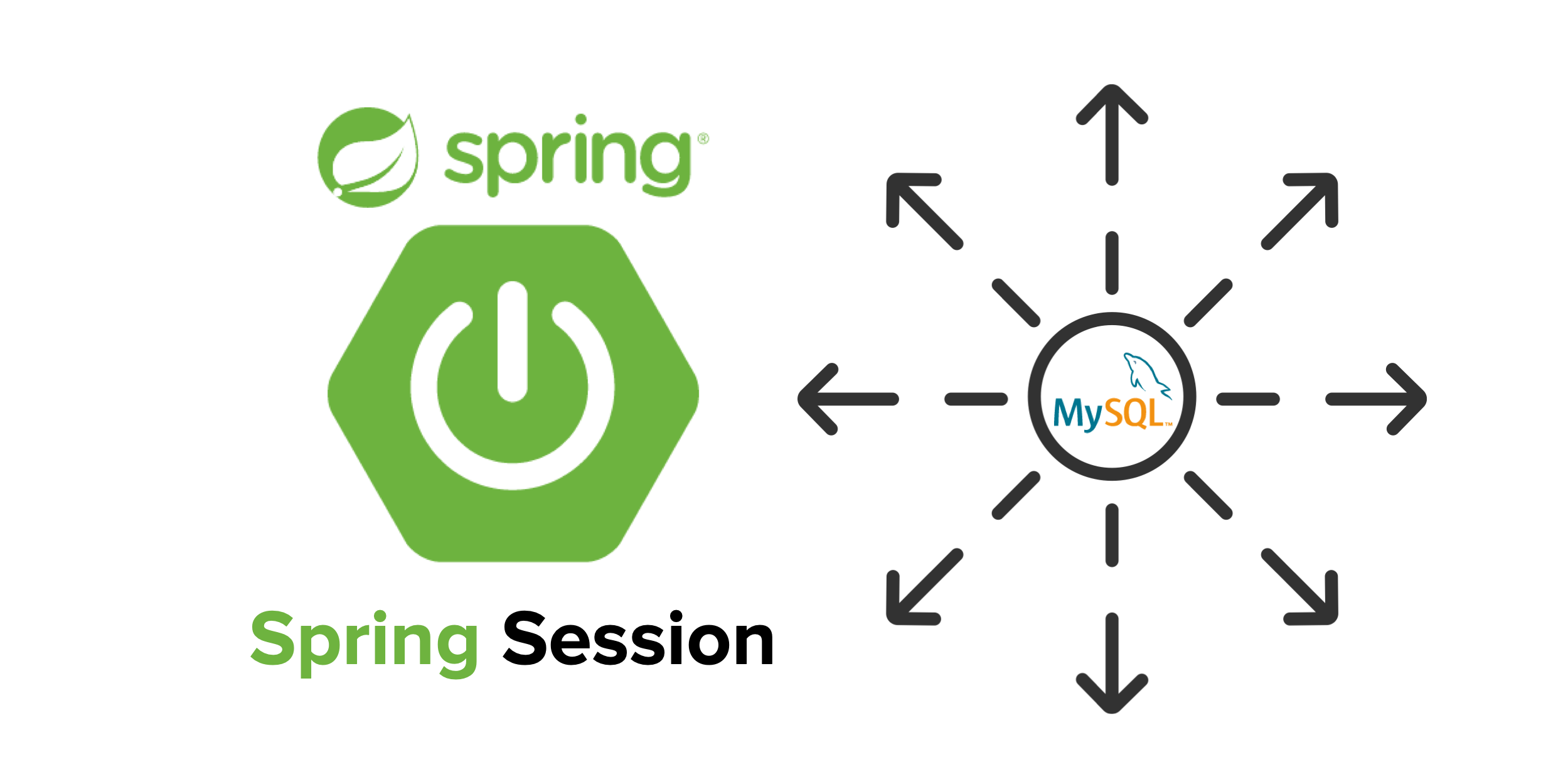
Session management in multi-node applications presents multiple challenges. When the architecture includes a load balancer, client requests might be routed to different servers each time, and the HTTP session might be lost. In this tutorial, I’ll walk you through the configuration of session sharing in a multi-node Spring Boot application. Prerequisites: Java 8+ Docker Docker Compose Table of Contents Session Persistence Session Sharing with Spring Session Learn More about Spring Session and OAuth 2.0 Session...
Deploy a Secure Spring Boot App to Heroku

Developers have cool ideas for pet projects all the time. I often have quite a clear picture of what I want to build and am ready to spend next weekend making the Next Big Thing. The weekend comes finally, and instead of building it, I find myself doing the same repetitive things - deployment, user sign in, registration, deployment, etc. Starting a new project with user registration and a login form is fun! - said...
OAuth 2.0 Patterns with Spring Cloud Gateway

Note: In May 2025, the Okta Integrator Free Plan replaced Okta Developer Edition Accounts, and the Okta CLI was deprecated. We preserved this post for reference, but the instructions no longer work exactly as written. Replace the Okta CLI commands by manually configuring Okta following the instructions in our Developer Documentation. Spring Cloud Gateway is the Reactive API Gateway of the Spring Ecosystem, built on Spring Boot, WebFlux, and Project Reactor. Its job is to...
JWT vs Opaque Access Tokens: Use Both With Spring Boot
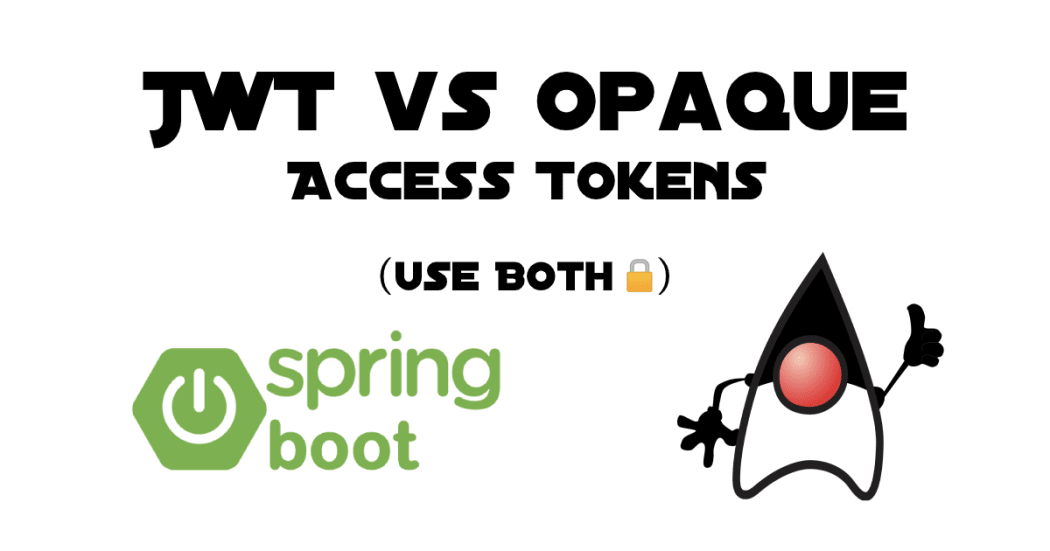
The topic of validating an OAuth 2.0 access tokens comes up frequently on this blog. Often we talk about how to validate JSON Web Token (JWT) based access tokens; however, this is NOT part of the OAuth 2.0 specification. JWTs are so commonly used that Spring Security supported them before adding support for remotely validating tokens (which is part of the OAuth 2.0 specification.) In this post, you will build a simple application that takes...
Build a Spring Boot Application Using Java Modules

Java is one of the most mature and persistent development languages that exists. Recently, it shifted to a 6-month release schedule, enabling it to deliver more frequent updates to the language. One of the changes introduced in Java 9 was the modular system. The Java Platform Module System (JPMS) adds two fundamental capabilities when building Java apps: Reliable configuration - replacing the brittle, error-prone class-path mechanism with a means for program components to declare explicit...
Build a CRUD App with Vue.js, Spring Boot, and Kotlin
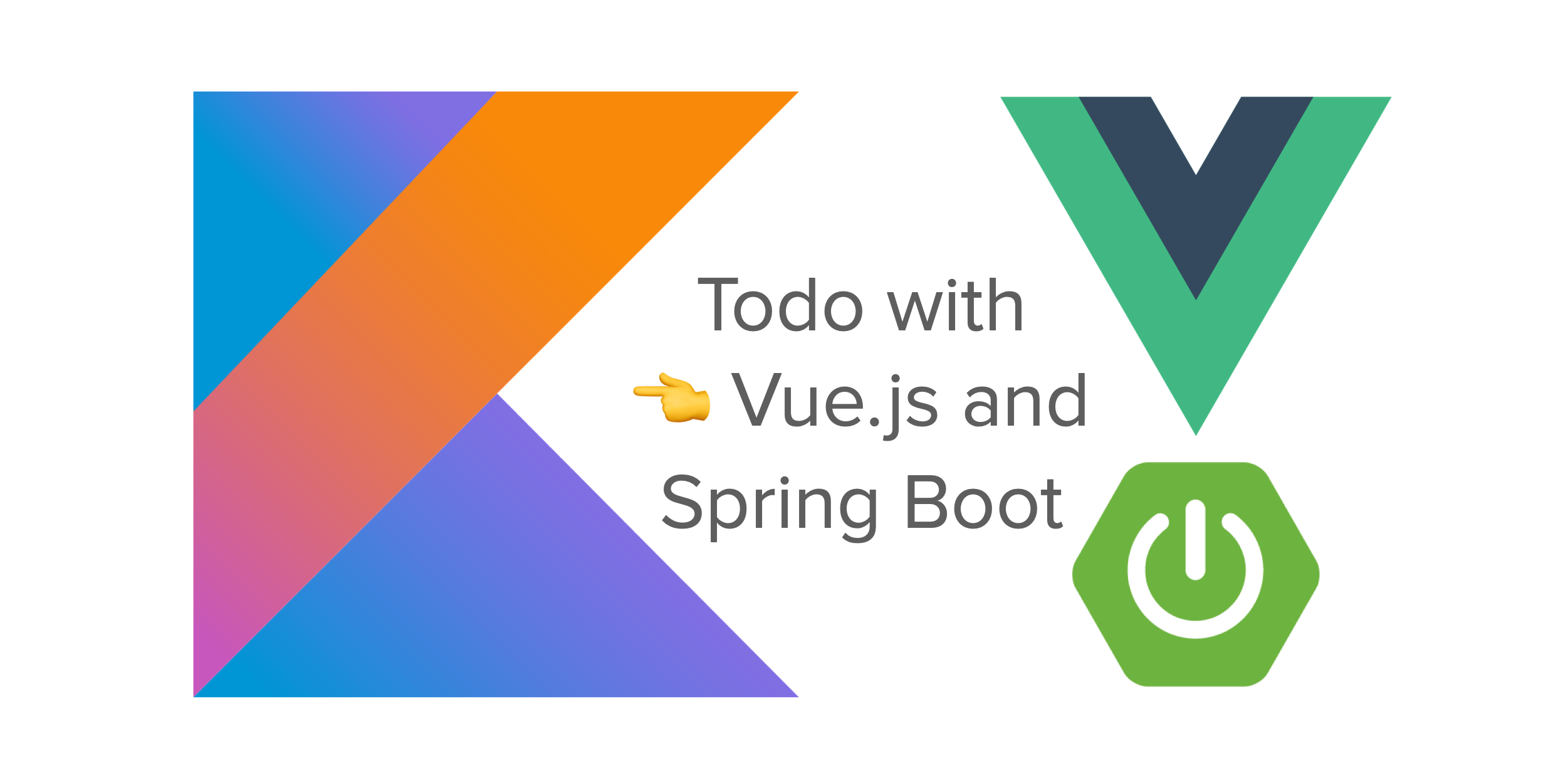
Much like React or Angular, Vue.js is a JavaScript view library. When coupled with a state management library like MobX, Vue.js becomes a full-featured application framework. Vue.js is designed to be incrementally adoptable, so you can use as much or as little of it as you like. Like React, Vue.js utilizes a virtual DOM to streamline processing so that it renders as little as possible on each state update. In my experience, Vue is far...
Angular + Docker with a Big Hug from Spring Boot
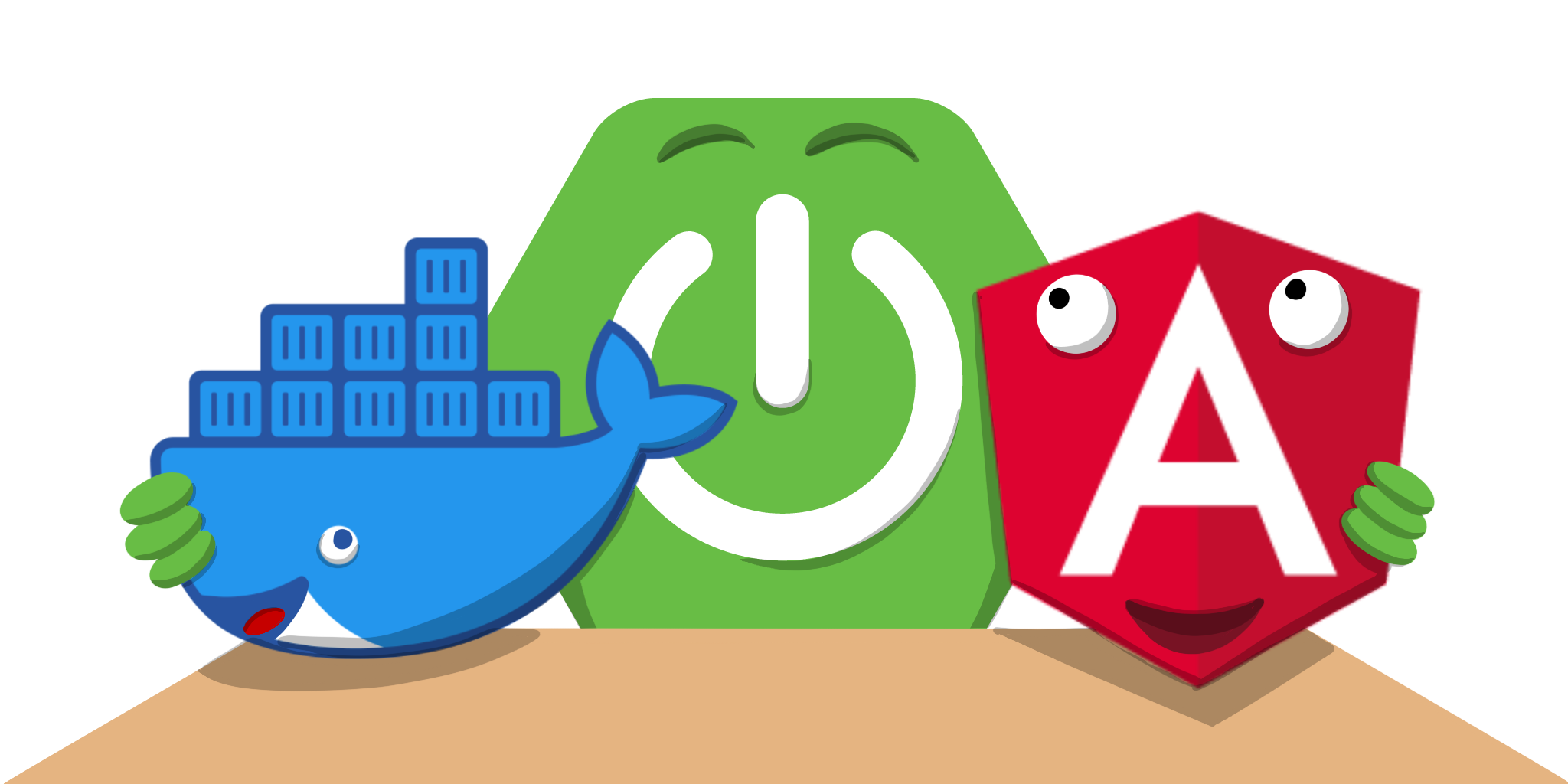
Building modern apps with Angular and Spring Boot is a common practice these days. In fact, if I use Google’s Keyword Planner to look up popular search terms, it’s one of the most popular combinations. The results in the list below are average monthly searches and not limited by location. This tutorial is the fourth and final in a series on Angular and Spring Boot in 2020. In the first one, I showed how to...
Secure Secrets With Spring Cloud Config and Vault
OpenID Connect Logout Options with Spring Boot
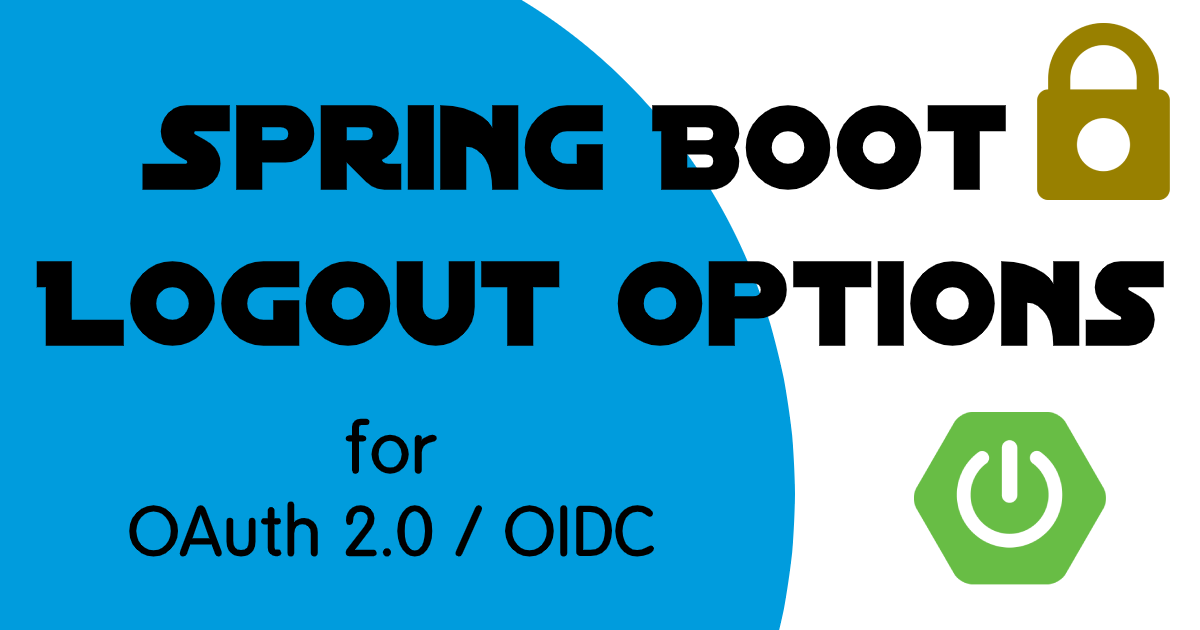
On the Okta blog, we spend much of our time talking about logging in. That is because once you configure your application to log in, the log out just works. But there are a few things you should consider when you’re thinking about your app’s logout configuration. In this post, I’ll walk through examples of the two logout options you have with Spring Security: the "default" session clearing logout, and relying party initiated logout. If...
Build Beautiful Angular Apps with Bootstrap

I’ve been a longtime fan of CSS frameworks since 2005. I led an open-source project called AppFuse at the time and wanted a way to provide themes for our users. We used Mike Stenhouse’s CSS Framework and held a design content to gather some themes we liked for our users. A couple of other CSS frameworks came along in the next few years, namely Blueprint in 2007 and Compass in 2008. However, no CSS frameworks...
How to GraphQL in Java

REST APIs are hard to design so they serve multiple clients well. As each client has their own needs in terms of data searching, filtering and which fields they want, a traditional REST API will provide a single version of an entity and the client has the responsibility of navigating through multiple endpoints and correlate the data on their side to build the data they want. GraphQL was developed by Facebook to overcome the shortcomings...
Build Single Sign-on in Java
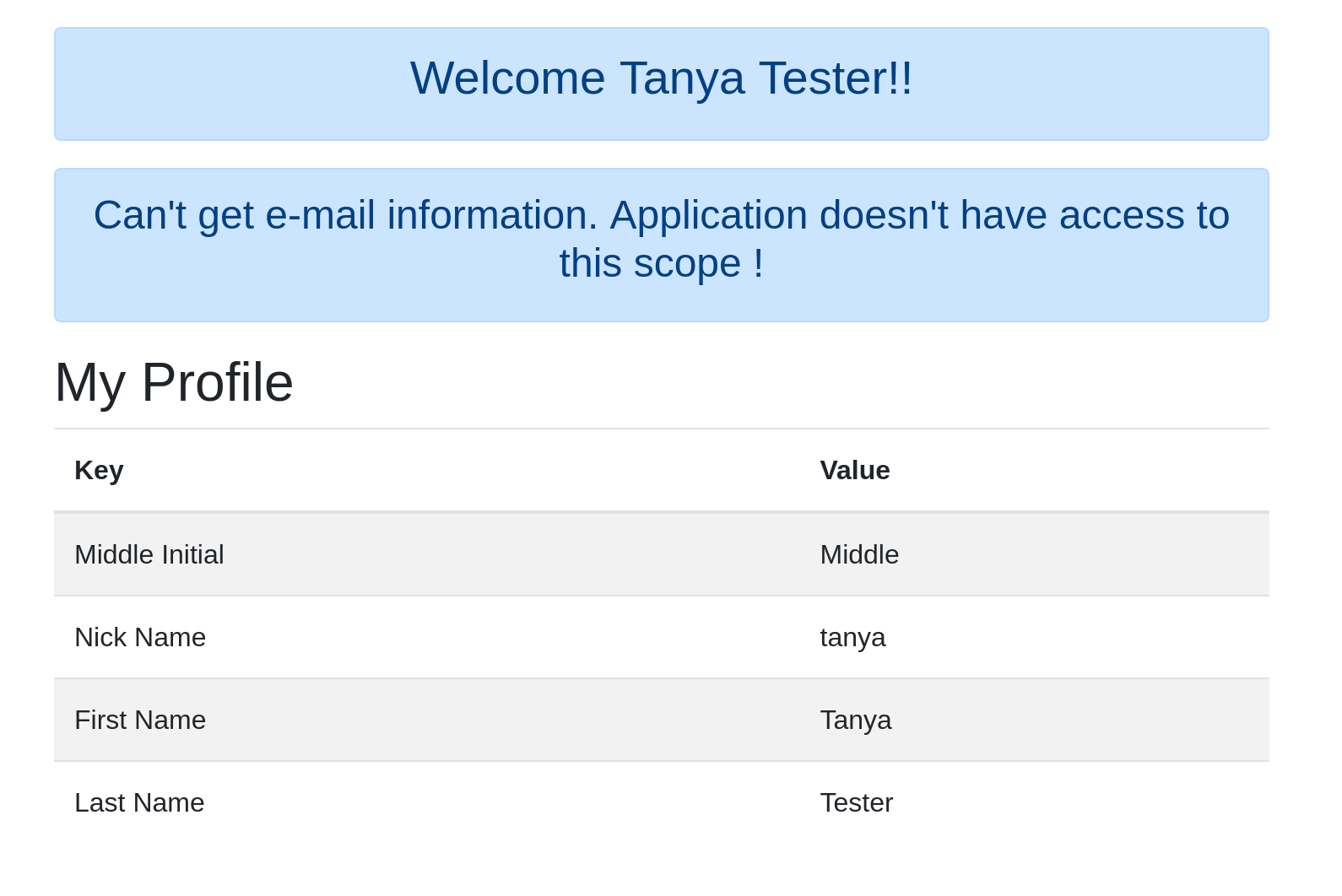
In modern app development, you quite frequently have a single resource server that provides data to multiple client applications. These applications may share a similar set of users, but need to enforce different permissions. For example, it’s possible that not all users of the first application should be allowed to access the second (think of, for example, an admin console application versus a client or user application). How would you implement this? One way to...
Use PKCE with OAuth 2.0 and Spring Boot for Better Security

Browser and mobile feature enhancements move fast. Often times, these technologies move faster than security standards designed to protect them can keep up. OAuth 2.0 offers the best and most mature standard for modern applications. However, there hasn’t been an official release of this standard since 2012. Eight years is a very long time in Internet technology years! That doesn’t mean that its contributors have been sitting idly by. There is active work on the...
Build a CRUD Application with Kotlin and React

In this tutorial, you’re going to build a client and server application using React for the frontend and Kotlin with Spring Boot for the backend. You’ll first build the app unsecured before securing it using Okta. To secure the React frontend, you’ll use OAuth 2.0 login, and for the backend, you’ll use a JSON Web Token and Spring Boot’s resource server OAuth implementation. This tutorial covers a lot of ground. It also uses a lot...
Java REST API Showdown: Which is the Best Framework on the Market?
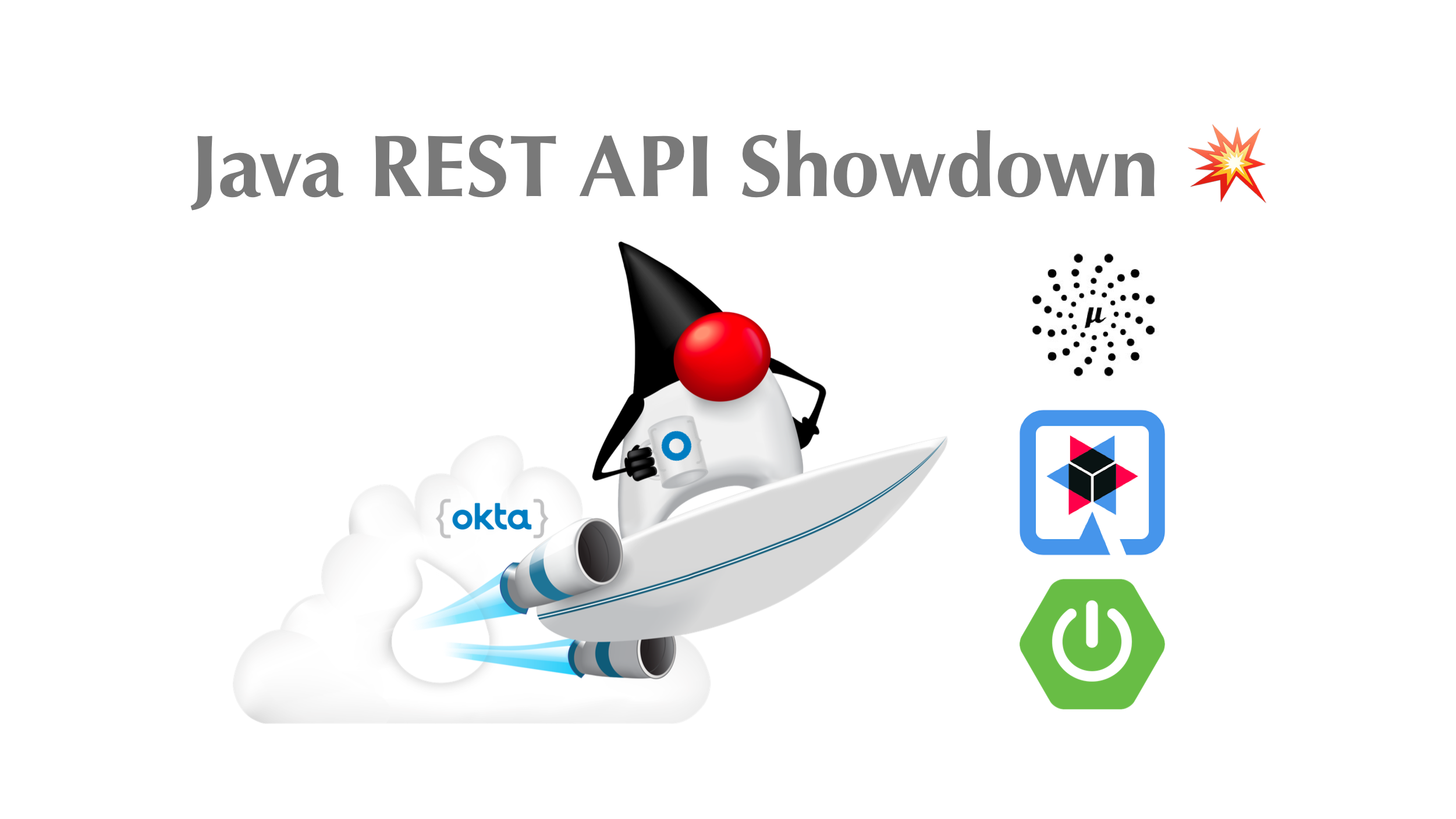
Developing services in Java, including REST APIs, wasn’t always easy or productive until Spring came along and changed the landscape. Many years have passed since then, and new frameworks have emerged in the community. One of these frameworks was Micronaut. It’s developed by OCI, the same company behind Grails, and their goal is to help developers create microservices and serverless applications. There is also Quarkus, another framework that gained popularity over the last year. Developed...
Secure Legacy Apps with Spring Cloud Gateway
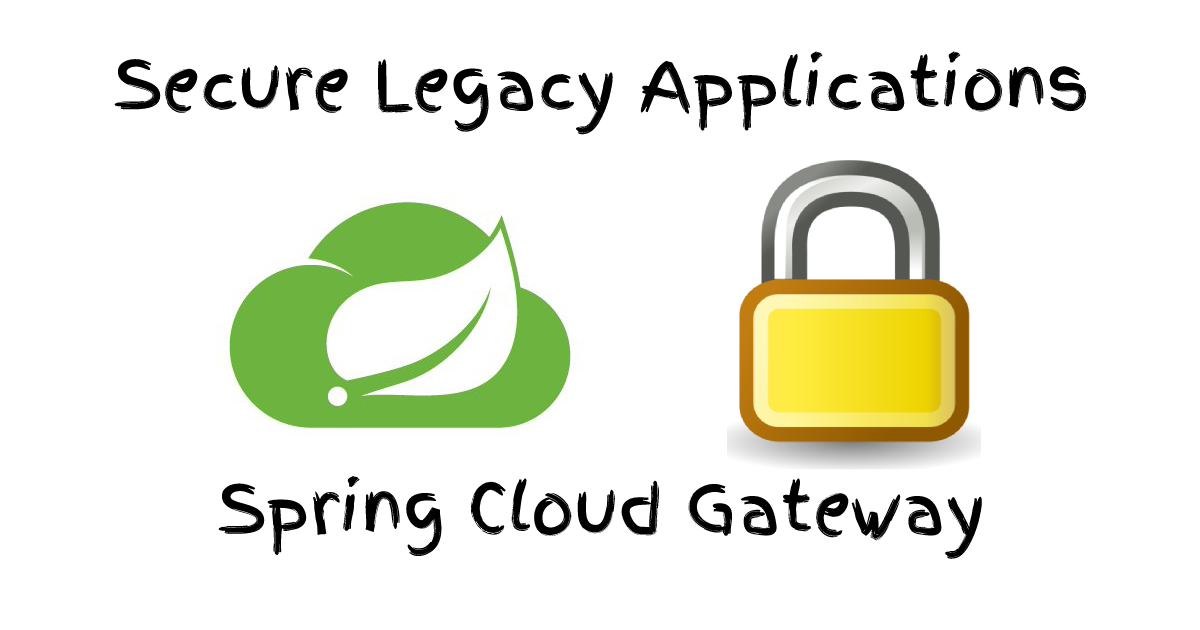
One of the biggest challenges of adding OAuth 2.0 support to legacy applications is a lack of support in the underlying framework. Maybe it’s homegrown, or maybe it’s just old? Either way, migrating away from an old form-based login doesn’t need to be so painful. In this post, I’ll walk you through a low-code option using Spring Cloud Gateway and Okta. You’ll learn how to setup Spring Cloud Gateway running as a stand-alone application that...
Build a CRUD App with Angular 9 and Spring Boot 2.2

Angular is a web framework for building mobile and desktop applications. Its first version, AngularJS, was one of the first JavaScript MVC frameworks to dominate the web landscape. Developers loved it, and it rose to popularity in the early 2010s. AngularJS 1.0 was released on June 14, 2014. Angular 9 was recently released, giving Angular quite a successful run in the land of web frameworks. Spring Boot is one of the most popular frameworks for...
Add Docker to Your Spring Boot Application
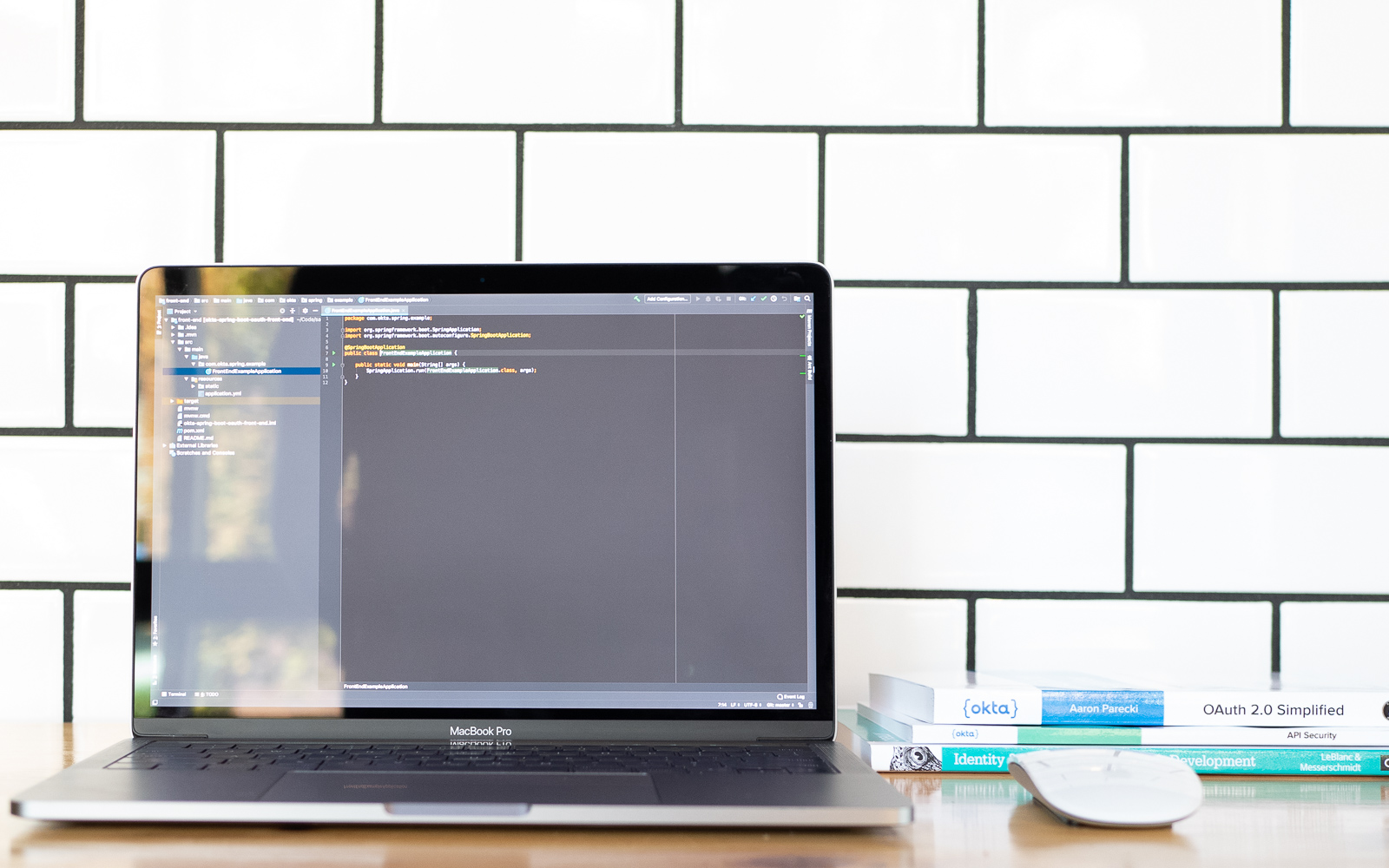
Docker enables you to deploy a server environment in containers. A container is a standardized unit of software that assembles code, runtime, dependencies, settings, and initialization in a single package that you can run reliably from one computing environment to another. Deploying your app as a Docker container is not hard, and can alleviate a lot of problems that you may encounter when moving your app around the multiple environments it has to go, like...
Use Okta Token Hooks to Supercharge OpenID Connect
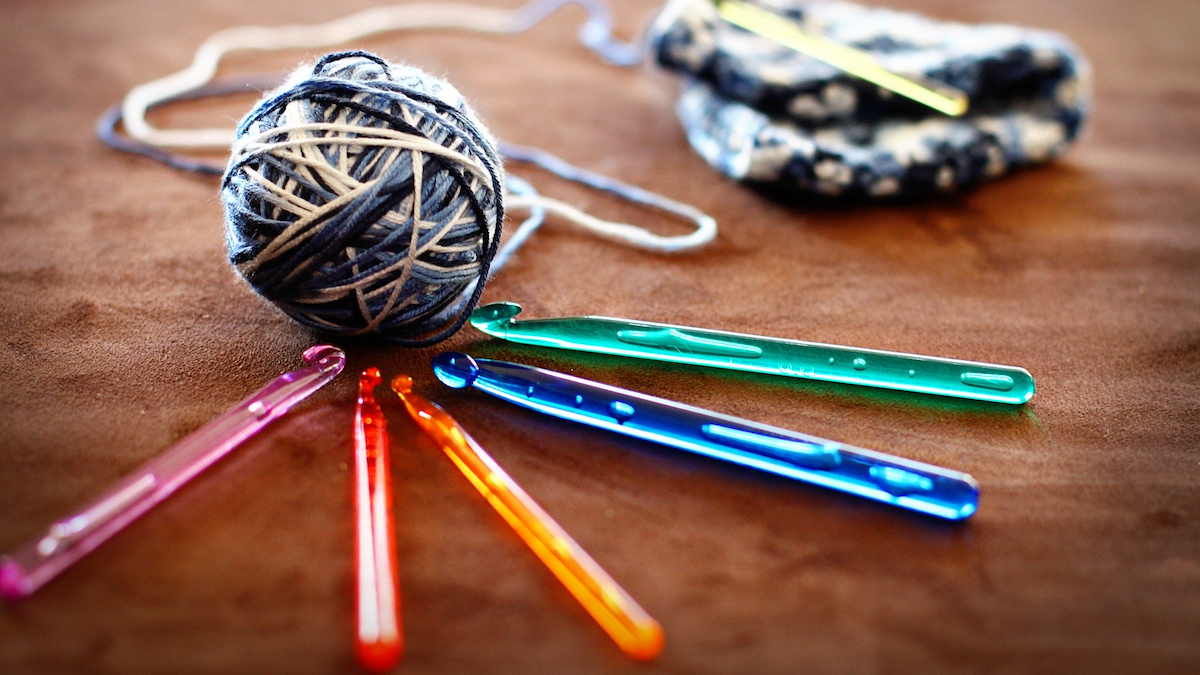
OpenID Connect (OIDC) and OAuth 2.0 are already recognized as powerful tools for incorporating authentication and authorization into modern web applications. Okta has enhanced the capabilities of these standards by introducing our Inline Hooks feature. There are a number of different types of inline hooks that Okta supports. In this post, I focus on hooks that allow you to patch information into the tokens you get back from Okta via OIDC and OAuth. You’ll first...
Deploy Your Spring Boot App the Right Way

Spring Boot is an awesome solution to speed up the development cycle of your app. Have an idea and want to transform it into a Spring Boot app, but don’t know the best way to deploy it? Look no further, we will help you out! There are plenty of options to deploy Spring Boot applications. In this article. we will cover three of them: Azure Amazon Web Services Self-hosted We will use a simple application...
Kafka with Java: Build a Secure, Scalable Messaging App

Today’s users expect your app to be accessible from their computer, mobile phone, tablet, or any other device! This transition to Software as a Service (SaaS) as the norm requires developers to effectively integrate with robust tools that scale to handle thousands (or even millions) of requests every second. Apache Kafka is one of the most effective tools for handling those high throughput environments. In this tutorial, you’ll learn the basic concepts behind Apache Kafka...
OAuth 2.0 Java Guide: Secure Your App in 5 Minutes

Modern applications rely on user authentication, but it can present Java developers with a difficult challenge, as well as a range of framework-specific options to choose from. We have seen many Spring developers start with a simple, home-grown authentication service they plan to replace “later” with a more robust option… only for that homegrown service to bikeshed its way to a permanent place in the stack. To end this cycle of heartbreak, this post will...
Build an Application with Spring Boot and Kotlin
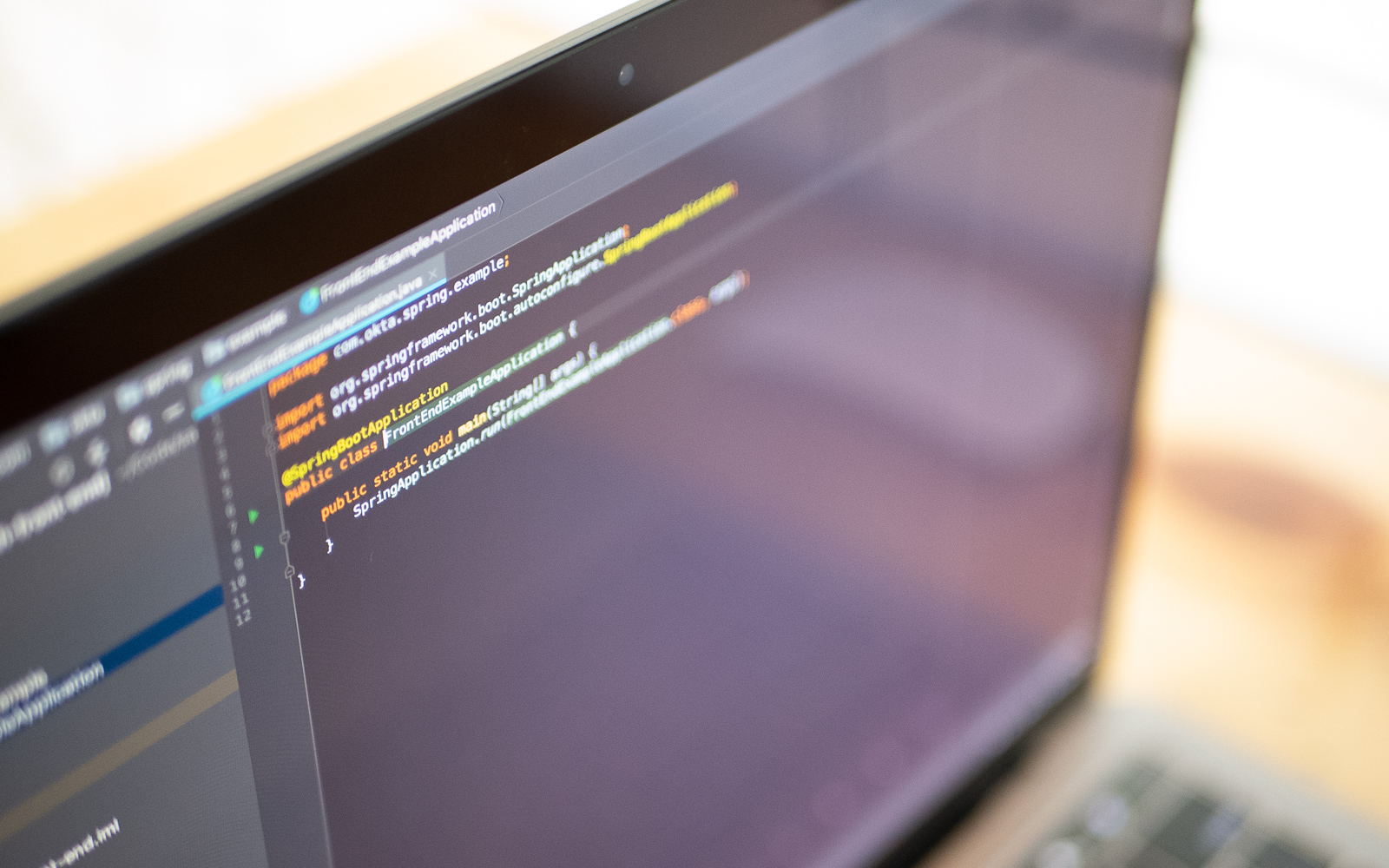
In 2011, JetBrains, the company behind IntelliJ, decided to create a modern language that would run inside the Java Virtual Machine and address common concerns with Java at the time like its verbosity. This project became Kotlin, a quickly growing and popular language. Google then announced official support for Kotlin on Android, further accelerating its adoption. Many companies started to replace Java with Kotlin as their main language to take advantage of the new features...
Secure Reactive Microservices with Spring Cloud Gateway

So you wanna go full reactive, eh? Great! Reactive programming is an increasingly popular way to make your applications more efficient. Instead of making a call to a resource and waiting on a response, reactive applications asynchronously receive a response. This allows them to free up processing power, only perform processing when necessary, and scale more effectively than other systems. The Java ecosystem has its fair share of reactive frameworks, including Play Framework, Ratpack, Vert.x,...
Make Java Tests Groovy With Hamcrest

My favorite way to test Java code is with Groovy. Specifically, writing tests in Groovy with Hamcrest. In this post, I’ll walk through how to test a simple Spring Boot application with these tools. Groovy is an optionally typed dynamic language for the JVM, and can be compiled statically. That is a mouthful and I’ll explain this as we go, but for now think of Groovy as Java with lots of sugar. Groovy is a...
Get Jibby With Java, Docker, and Spring Boot

Docker is a very popular system for containerizing applications. Containerization packages the executable code along with the runtime environment in deployable virtual images using a repeatable, automatable process. In the world of cloud-based development and microservices, where a single application can be spread across hundreds of servers in various networks with complex port configurations, the ability to automate the deployment of “units” of code is super helpful. The ability to control the execution environment also...
Easy Spring Boot Deployment with AWS Elastic Beanstalk

Nearly all applications rely on authentication. Developers, and the companies that employ them, want to confirm who is making the request and are they who they say they are. And, this needs to happen fast enough for a good user experience. Fortunately, there are great tools to help. Spring Boot with Spring Security is a fantastic solution for Java-based web development. With relatively little code, developers can implement, test, update, and expand authentication schemes easily...
Monitor Your Java Apps with Spring Boot Actuator

Have you worked with Spring Boot Actuator yet? It’s an immensely helpful library that helps you monitor app health and interactions with the app - perfect for going to production! Spring Boot Actuator includes a built-in endpoint for tracing HTTP calls to your application - very useful for monitoring OpenID Connect (OIDC) requests - but unfortunately the default implementation does not trace body contents. In this post, I’ll show you how to extend the httptrace...
Use Spring Boot and MySQL to go Beyond Authentication

In this post, we will walk through how to build a simple CRUD application using Spring Boot, MySQL, JPA/Hibernate and Okta OpenID Connect (OIDC) Single Sign-On (SSO). The Java Persistence API (JPA) provides a specification for persisting, reading, and managing data from your Java object to relational tables in the database. The default implementation of JPA via Spring Boot is Hibernate. Hibernate saves you a lot of time writing code to persist data to a...
Build Mobile Apps with Angular, Ionic 4, and Spring Boot
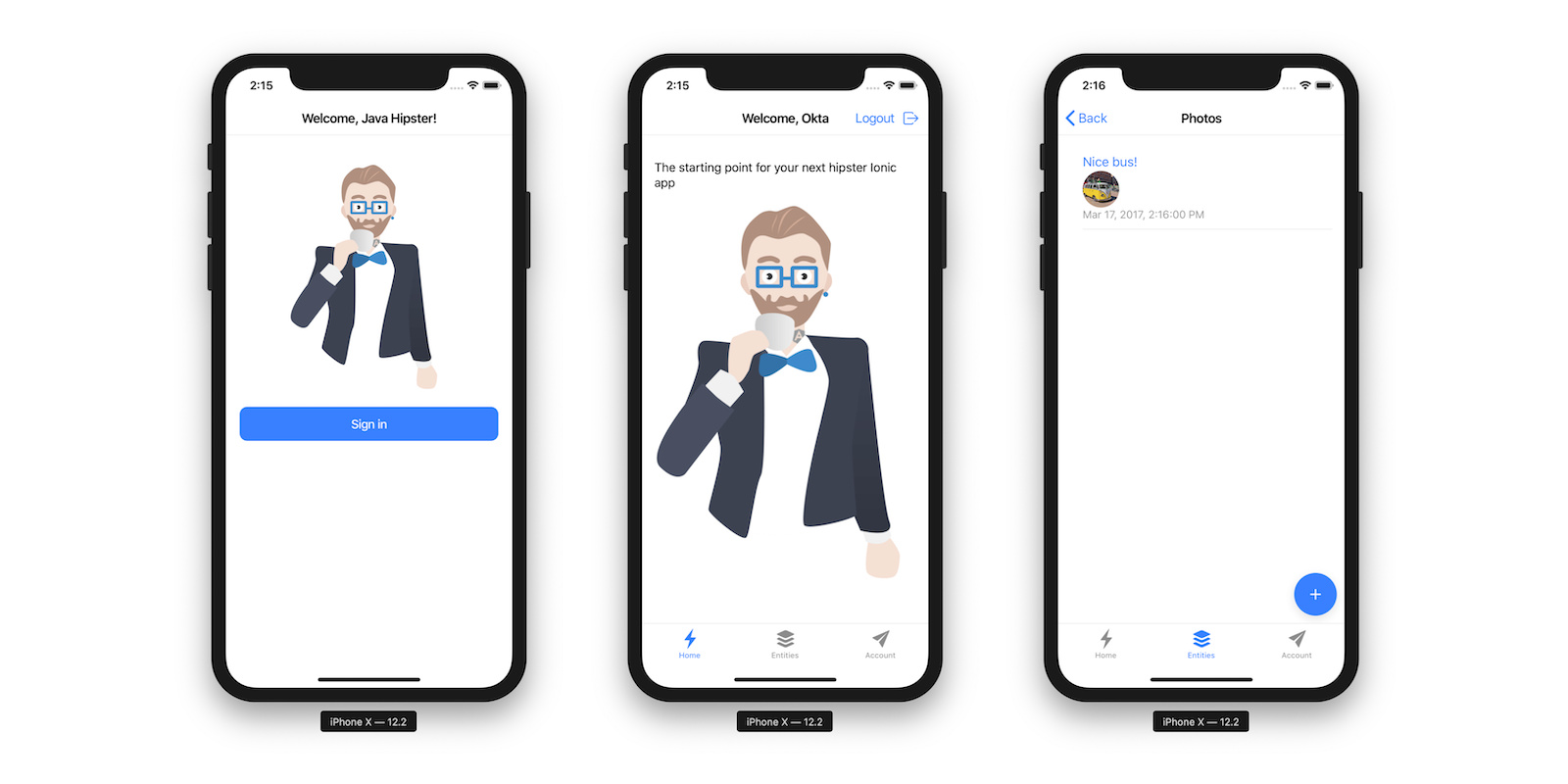
I’m a big fan of Ionic. I started using it several years ago when it was based on AngularJS. As a developer, I really liked it because I knew Angular. I found didn’t have to learn much more to be a productive developer with Ionic. What is Ionic? I’m glad you asked! Ionic is an open source project that allows you to build mobile apps using web tech. Technically, this is called a "hybrid" app...
Spring Method Security with PreAuthorize

This tutorial will explore two ways to configure authentication and authorization in Spring Boot using Spring Security. One method is to create a WebSecurityConfigurerAdapter and use the fluent API to override the default settings on the HttpSecurity object. Another is to use the @PreAuthorize annotation on controller methods, known as method-level security or expression-based security. The latter will be the main focus of this tutorial. However, I will present some HttpSecurity code and ideas by...
Simple Authentication with Spring Security

Authentication is vital to all but the most basic web applications. Who is making the request, wanting data, or wanting to update or delete data? Can you be sure that the request is coming from the stated user or agent? Answering this question with certainty is hard in today’s computer security environment. Fortunately, there is absolutely no reason to reinvent the wheel. Spring Boot with Spring Security is a powerful combination for web application development....
Java + Spring Tutorials

Spring Boot, and the Spring framework in general, are the core tools for the modern Java developer. They abstract away many nuances of development and architecture, allowing you to focus on building your business logic, aka, the parts of your app that will move the needle for your organization. Here at Okta we believe in that abstraction, and that a big part of modern development is using the right tools to make the job not...
Java Microservices with Spring Boot and Spring Cloud
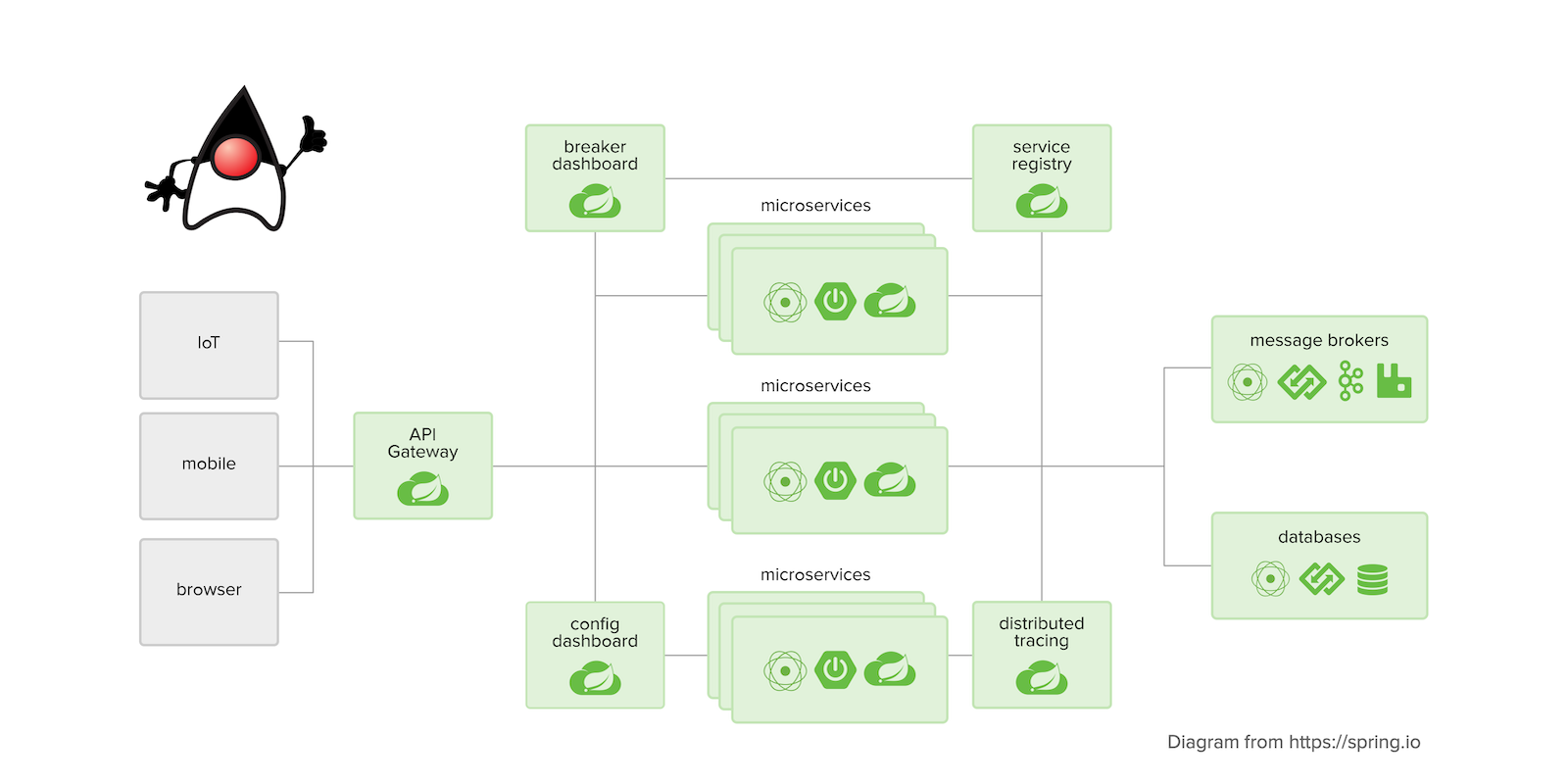
Java is a great language to use when developing a microservice architecture. In fact, some of the biggest names in our industry use it. Have you ever heard of Netflix, Amazon, or Google? What about eBay, Twitter, and LinkedIn? Yes, major companies handling incredible traffic are doing it with Java. Implementing a microservices architecture in Java isn’t for everyone. For that matter, implementing microservices, in general, isn’t often needed. Most companies do it to scale...
A Quick Guide to Spring Boot Login Options

In this post, you’re going to work through various options for implementing a login feature using Spring Boot 2.1. You’ll start with the most simple, basic auth, which you’d likely never want to use except for perhaps an internal backend tool, and move on to a simple form-based authentication page. Next, you’ll customize the default, auto-generated form by overriding some default templates and controllers. Finally, you’ll move on to adding Single Sign-on using OAuth 2.0....
Angular 8 + Spring Boot 2.2: Build a CRUD App Today!
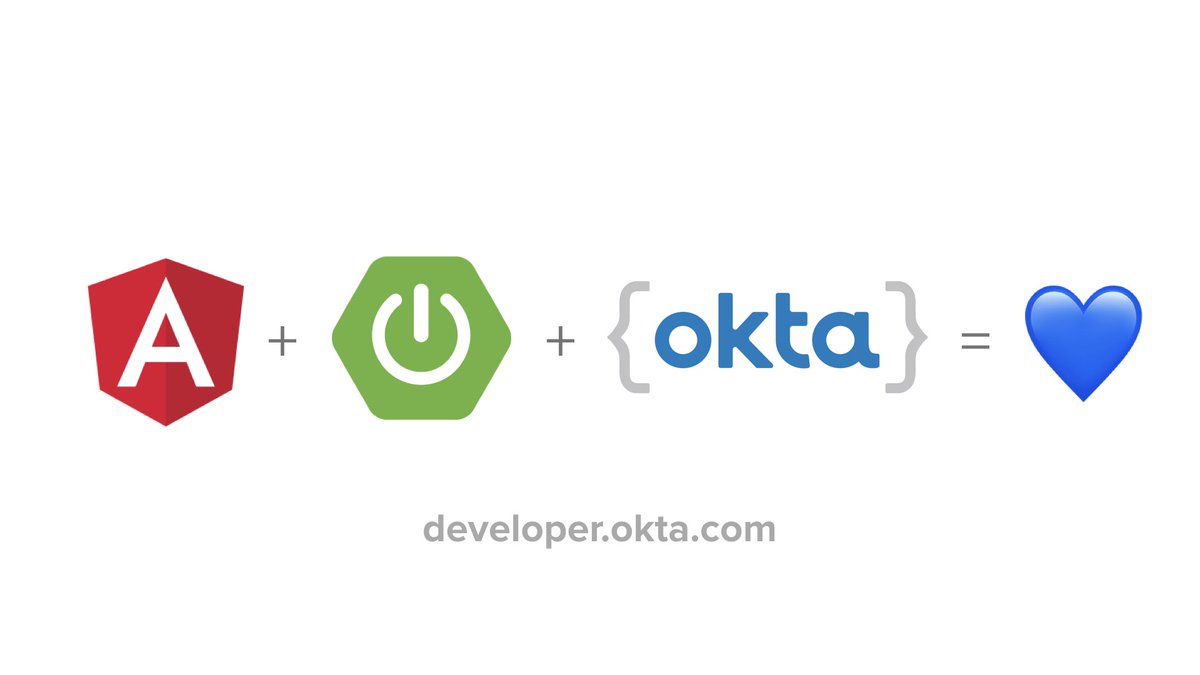
If you’ve been a Java developer for more than 15 years, you probably remember when there were a plethora of Java web frameworks. It started with Struts and WebWork. Then Tapestry, Wicket, and JSF came along and championed the idea of component-based frameworks. Spring MVC was released in 2004 (in the same month as Flex 1.0 and JSF 1.0) and became the de-facto standard in Java web frameworks over the next six years. Then along...
Easy Single Sign-On with Spring Boot and OAuth 2.0

Single sign-on used to be the “Holy Grail” of enterprise size companies and was usually only available companies that could afford it. Nowadays, we take SSO as a matter of course. For instance, you would think it was completely weird (and unpleasant) if you logged into GMail and then had to log in again when you went to Google Docs. But, what about building custom applications for developers? SSO was still in the domain of...
Deploy a Spring Boot Application into Tomcat

Deploying applications is hard. Often you need console access to the server from which you pull the latest code and then manually instantiate into your container. In this tutorial you’ll see an easier way using Tomcat: you’ll create an authenticated web app and deploy it through the browser using the latest versions of Tomcat, Spring Boot, and Java. Since version 9, Oracle has decreased the Java release cadence to six months so major version numbers...
Better, Faster, Lighter Java with Java 12 and JHipster 6

There’s a lot going on in the Java ecosystem lately. Now that major Java versions are released every six months, it can be difficult to keep up. Personally, I develop the majority of my Java applications using Spring Boot. Because of this, I was stuck on Java 8 until Spring Boot 2.1 was released last October. Spring Boot 2.1 added Java 11 support, along with performance improvements, a new metrics implementation, new actuator endpoints, and...
Build a Microservice Architecture with Spring Boot and Kubernetes

In this tutorial, you’re going to use Kubernetes to deploy a Spring Boot microservice architecture to Google Cloud, specifically the Google Kubernetes Engine (GKE). You’re also going to use Istio to create a service mesh layer and to create a public gateway. The whole thing is going to be secured using Okta OAuth JWT authentication. That was a mess of jargon. We’re not going to explain microservices in-depth here. In short, microservices are a design...
A Quick Guide to OAuth 2.0 with Spring Security

When building a web application, authentication and authorization is a must. Doing it right, however, is not simple. Computer security is a true specialty. Legions of developers work day and night against equally numerous international hackers creating a continual development cycle of finding vulnerabilities, attacking them, and fixing them. Keeping up with all this solo would be painful (if not impossible). Fortunately, there’s no need. Spring Security and Spring Boot have made implementing a web...
Secure Service-to-Service Spring Microservices with HTTPS and OAuth 2.0
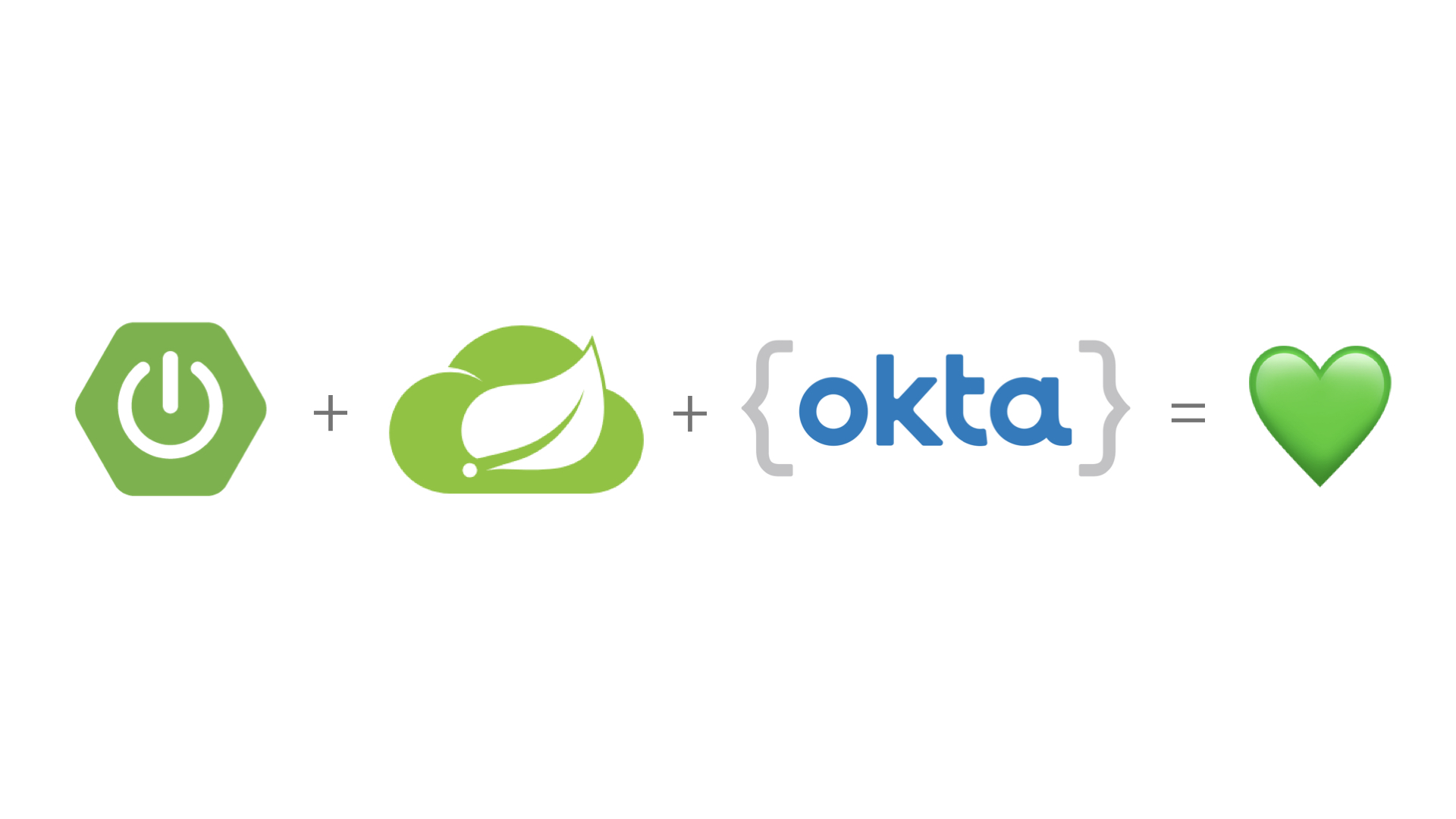
Building a microservices architecture is possible with minimal code if you use Spring Boot, Spring Cloud, and Spring Cloud Config. Package everything up in Docker containers and you can run everything using Docker Compose. If you’re communicating between services, you can ensure your services are somewhat secure by not exposing their ports in your docker-compose.yml file. But what happens if someone accidentally exposes the ports of your microservice apps? Will they still be secure or...
Migrate Your Spring Boot App to the Latest and Greatest Spring Security and OAuth 2.0

Spring Boot 1.5.x made it easier than ever before to integrate Spring Security with OAuth 2.0 into your application. Spring Boot 2.1.x dials it up to 11 by making OpenID Connect a first class citizen in the stack. In this post, you start with Spring Boot 1.5.19 and Spring Security 4.2.x. You integrate it with Okta’s OAuth service. From there, you move onto Spring Boot 2.1.3 and Spring Security 5.1. You’ll see how integrating with...
Build Spring Microservices and Dockerize Them for Production

In this post, you’ll learn about microservices architecture and how to implement it using Spring Boot. After creating some projects with the technique, you will deploy the artifacts as Docker containers and will simulate a container orchestrator (such as Kubernetes) using Docker Compose for simplification. The icing on the cake will be authentication integration using Spring Profiles; you will see how to enable it with a production profile. But first, let’s talk about microservices. Note:...
i18n in Java 11, Spring Boot, and JavaScript
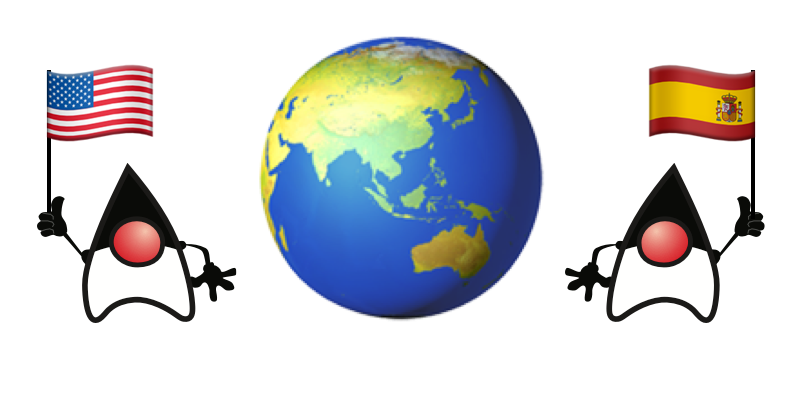
What are i18n and l10n? Internationalization (i18n) is the process of making your application capable of rendering its text in multiple languages. Localization (l10n) means your application has been coded in such a way that it meets language, cultural, or other requirements of a particular locale. These requirements can include formats for date, time, and currency, as well as symbols, icons, and colors, among many other things. i18n enables l10n. Why is i18n and l10n...
Build a Reactive App with Spring Boot and MongoDB

Reactive apps allow you to scale better if you’re dealing with lots of streaming data. They’re non-blocking and tend to be more efficient because they’re not tying up processing while waiting for stuff to happen. Reactive systems embrace asynchronous I/O. The concept behind asynchronous I/O is straightforward: alleviate inefficient resource utilization by reclaiming resources that would otherwise be idle as they waited for I/O activity. Asynchronous I/O inverts the normal design of I/O processing: the...
Spring Boot with PostgreSQL, Flyway, and JSONB

Note: In May 2025, the Okta Integrator Free Plan replaced Okta Developer Edition Accounts, and the Okta CLI was deprecated. We preserved this post for reference, but the instructions no longer work exactly as written. Replace the Okta CLI commands by manually configuring Okta following the instructions in our Developer Documentation. In this tutorial, you are going to learn more about PostgreSQL and how to integrate it with a Spring Boot application. You will learn...
Add Social Login to Your JHipster App

Social login is a great way to offer your customers a simple and secure authentication method. Why force them to create and forget yet another password? The vast majority of your users will have an account with Facebook or Google, so why no go ahead and let them use one of these accounts to log in? In this tutorial, you are going to integrate two social login providers: Google and Facebook. You are also going...
Create a Secure Spring REST API

“If it is useful, it will be modified.” Those words of wisdom came from a QA teacher of mine, to explain that all software evolves when it becomes useful to someone, and for as long as it is useful. We all know this. Users ask us for new features, bug fixes and changes in domain logic every day. As any project (especially a monolith) grows it can begin to become difficult to maintain, and the...
Bootiful Development with Spring Boot and Vue
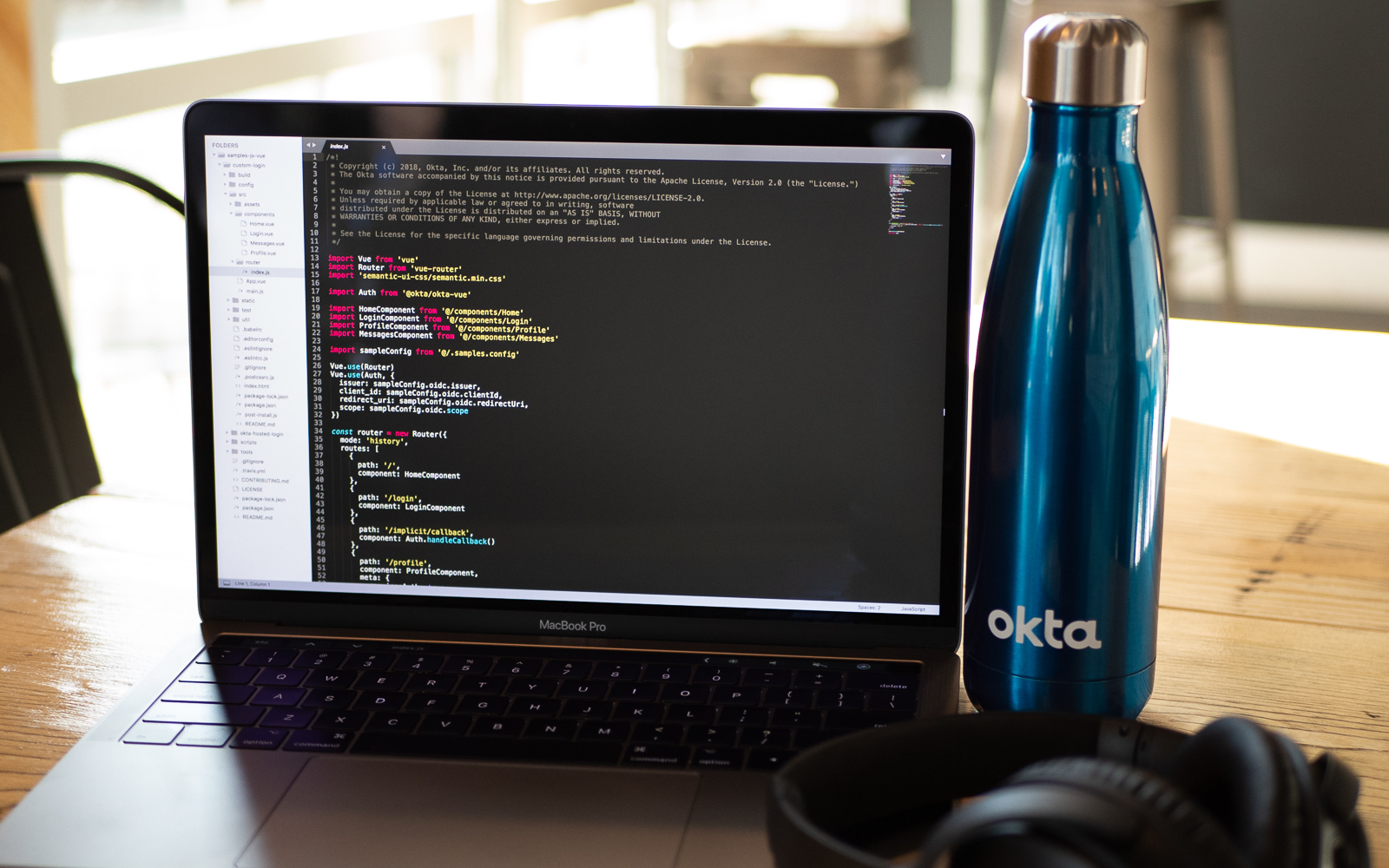
Vue is a web framework that’s gotten a lot of attention lately because it’s lean and mean. Its baseline framework cost is around 40K and is known as a minimalistic web framework. With all of the recent attention on web performance and mobile-first, mobile-fast, it’s no surprise that Vue has become more and more popular. If you spent the time to learn AngularJS back in the day, chances are you’ll find an old friend in...
Spring Boot 2.1: Outstanding OIDC, OAuth 2.0, and Reactive API Support

Spring Boot 2.1 was recently released, eight months after the huge launch of Spring Boot 2.0. The reason I’m most excited about Spring Boot 2.1 to me is its improved performance and OpenID Connect (OIDC) support from Spring Security 5.1. The combination of Spring Boot and Spring Security has provided excellent OAuth 2.0 support for years, and making OIDC a first-class citizen simplifies its configuration quite a bit. For those that aren’t aware, OIDC is...
Build a Simple CRUD App with Spring Boot and Vue.js
Simple Token Authentication for Java Apps

JSON Web Tokens have quickly become the standard for securing web applications, superseding older technologies like cookies and sessions. Used properly, they address a range of security concerns, including cross-site scripting attacks (XSS), man-in-the-middle attacks (MITM), and cross-site request forgery (CSRF). They also give us the benefit of inspectable metadata and strong cryptographic signatures. In this post, I’ll take a deep dive into JWTs. First, I’ll cover some theoretical ground explaining how they work. After...
Build a Mobile App with React Native and Spring Boot

React Native is a framework for building mobile applications with React. React allows you to use a declarative style of programming to describe how your UI should look. It uses embedded HTML (called JSX) to render buttons, lists, scrollable views, and many other components. I’m a seasoned Java and JavaScript developer that loves Spring and TypeScript. Some might call me a Java hipster because I like JavaScript. In this post, I’m going to show you...
Add User Authentication to Your Spring Boot App in 15 Minutes

When’s the last time you had fun building a web application? We love Spring Boot because it makes it super easy to build a rich Java web application, and it can even be pretty fun. By combining Spring, Spring Boot, and Gradle, we have a complete build system that can develop, test, run, and deploy Spring applications in minutes. But what about user authentication and authorization, you’re probably thinking. Maybe with a sneer. Surely that’s...
Build a Web App with Spring Boot and Spring Security in 15 Minutes

Developers know that securing web apps can be a pain. Doing it right is tough. The worst part is that “right” is a moving target. Security protocols change. Vulnerabilities are found in dependencies and patches are released. Tons of often complex boilerplate code has to be generated. The software-as-service paradigm has proliferated over the last decade, and while I love reinventing the wheel as much as the next developer (because, clearly, I’m gonna write it...
Full Stack Reactive with Spring WebFlux, WebSockets, and React
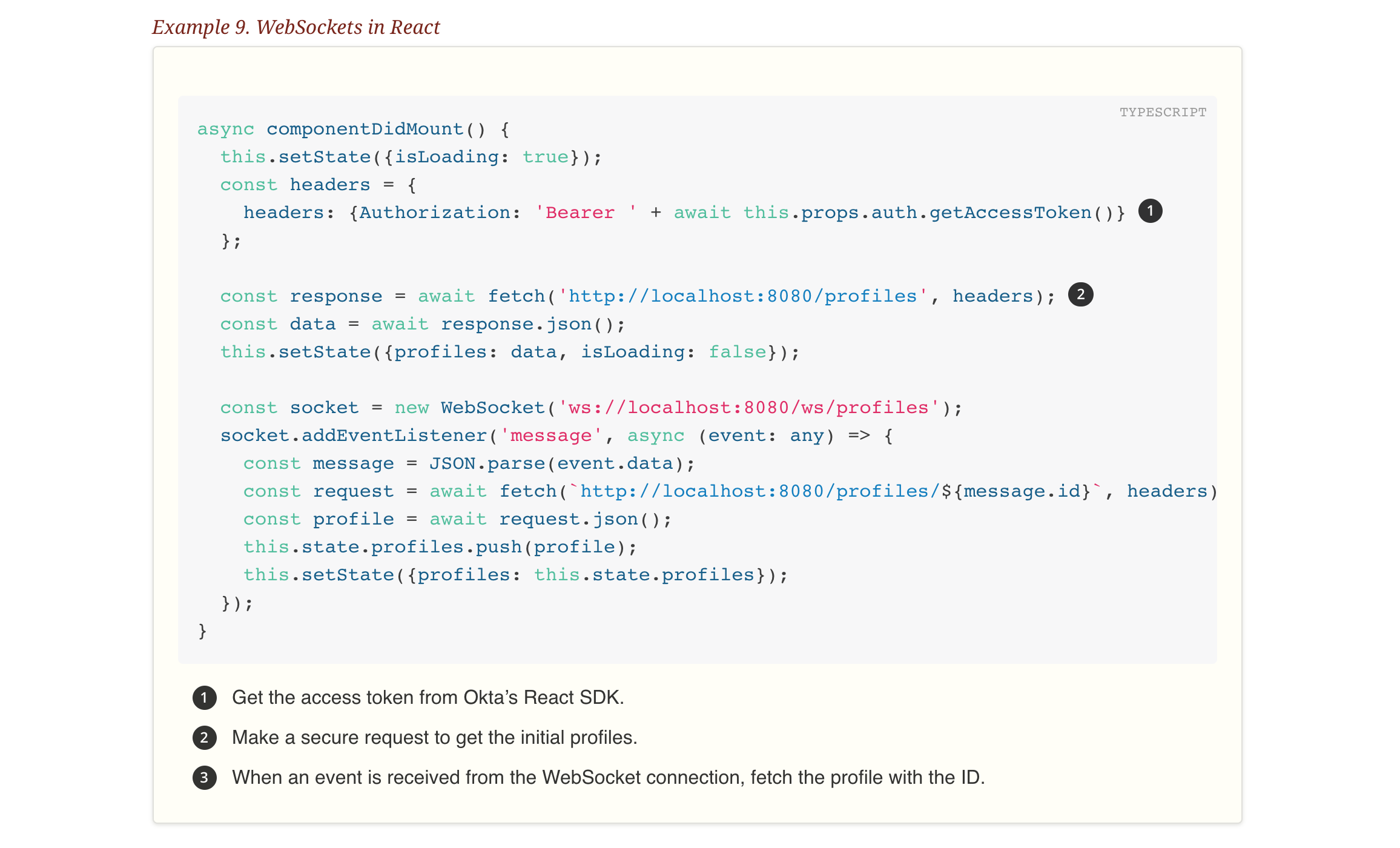
Spring WebFlux can be used to create a REST API with streaming data. Spring WebFlux can also be integrated with WebSockets to provide notifications that clients can listen to. Combining the two is a powerful way to provide real-time data streaming to JavaScript or mobile clients. Add React to the mix and you have an excellent foundation for a full-stack reactive architecture. React is a UI toolkit (similar to GWT) that lets you build components...
Build Reactive APIs with Spring WebFlux

Spring Boot 2.0 was a long-awaited release from the good folks at Pivotal. One of its new features is reactive web programming support with Spring WebFlux. Spring WebFlux is a web framework that’s built on top of Project Reactor, to give you asynchronous I/O, and allow your application to perform better. If you’re familiar with Spring MVC and building REST APIs, you’ll enjoy Spring WebFlux. There’s just a few basic concepts that are different. Once...
Get Started with Reactive Programming in Spring

Reactive programming allows you to build systems that are resilient to high load. Handling lots of traffic isn’t a problem because the server is non-blocking and doesn’t block client processes to wait for responses. The client cannot directly observe, or synchronize with, the execution that occurs on the server. When an API is struggling to handle requests, it should respond in a sensible way. It shouldn’t fail to work or drop messages in an uncontrolled...
Build a Basic CRUD App with Angular 7.0 and Spring Boot 2.1

Technology moves fast these days. It can be challenging to keep up with the latest trends as well as new releases of your favorite projects. I’m here to help! Spring Boot and Angular are two of my favorite projects, so I figured I’d write y’all a guide to show you how to build and secure a basic app using their latest and greatest releases. In Spring Boot, the most significant change in 2.0 is its...
Build a Secure API with Spring Boot and GraphQL

GraphQL is a data query language developed by Facebook in 2012 to solve a shortcoming of REST APIs and traditional database models. All too often, when programmers write REST API data queries, they default to retrieving entire data structures when they need only a part of it. For example, if you want to find out the number of comments on a blog post, a developer might typically retrieve the entire post and all associated fields...
10 Excellent Ways to Secure Your Spring Boot Application

Spring Boot has dramatically simplified the development of Spring applications. Its autoconfiguration and starter dependencies reduce the amount of code and configuration you need to begin an app. If you were used to Spring and lots of XML back in the day, Spring Boot is a breath of fresh air. Spring Boot was first released in 2014, and a lot has changed since then. Much like code quality and testing, security has become a concern...
Add Social Login to Your Spring Boot 2.0 App
We’ve all seen social login. It’s the “Log in with Facebook” or “Log in with Twitter” buttons we see below every username and password field on the Internet. But why do these exist? The primary benefits of social login are ease of use and security. It’s easier for your users to log into your app if they can use credentials they’ve already created on a a service they trust. They don’t have to come up...
Use React and Spring Boot to Build a Simple CRUD App
Add CI/CD to Your Spring Boot App with Jenkins X and Kubernetes
A lot has happened in the last five years of software development. What it means to build, deploy, and orchestrate software has changed drastically. There’s been a move from hosting software on-premise to public cloud and shift from virtual machines (VMs) to containers. Containers are cheaper to run than VMs because they require fewer resources and run as single processes. Moving to containers has reduced costs, but created the problem of how to run containers...
Build a Photo Gallery PWA with React, Spring Boot, and JHipster

At its core, React is just a UI toolkit, ala GWT, but it has a very healthy ecosystem around it that provides everything you need to build a kick-ass progressive web app (PWA). PWAs are cool because if they’re done right, they can offer a native-like experience for your users, allowing them to install your app, and use it when it’s offline. But, “why React?” is what you’re probably asking yourself right now, right? Well,...
Deploy Your Secure Spring Boot + Angular PWA as a Single Artifact
I’ve written several posts on this blog that show you how to develop an Angular SPA (single-page application) that talks to a Spring Boot API. In almost all of them, I’ve used OAuth 2.0’s implicit flow and built, tested, and deployed them as separate applications. IMHO, this is the way many applications (outside of the Java world) are built and deployed. What if you could combine the two applications for production, and still get all...
Secure Your Spring Boot Application with Multi-Factor Authentication
OAuth 2.0 has quickly become an industry standard for third party authentication for web applications. It’s a super secure strategy, when implemented properly, but getting it right can be hard. Fortunately, you don’t have to go it alone. Okta has done it for you. This is one place where it’s definitely not worth re-inventing the wheel. And further, with all of the cybersecurity attacks today, just using a password, even a hard password, is not...
Build a Basic CRUD Application with Grails and Okta
Grails and Groovy can be a great alternative to Spring Boot, in some specific use cases. In this post, we’ll start with that basic Grails app that already has secure authentication via Okta, and add some additional features. In this tutorial you will: Define a simple data model Create domain classes for the models Create the necessary controllers and views Configure logging Configure the database so that the data is persisted between sessions Add some...
Build and Secure Microservices with Spring Boot 2.0 and OAuth 2.0
Spring Boot has experienced massive adoption over the last several years. For Spring users, it offers a breath of fresh air, where they don’t have to worry about how things are configured if they’re comfortable with defaults. The Spring Boot ecosystem is filled with a wealth of what they call starters. Starters are bundles of dependencies that autoconfigure themselves to work as a developer might expect. Spring Boot allows you to create standalone web apps,...
The Hitchhiker's Guide to Testing Spring Boot APIs and Angular Components with WireMock, Jest, Protractor, and Travis CI
Writing apps with Spring Boot and Ionic (which is built on Angular) can be fun because both frameworks offer a good developer experience (DX). You change a file, save it, and the app automatically reloads with your changes. This feature is often called hot-reload and it’s a blissful way to develop. It’s so nice, it can cause you to forget about automating your tests. I’ll admit, writing tests is difficult to do. Writing the test...
Build Server Side Authentication in Grails with OAuth 2.0 and Okta
What is Grails, what is Groovy, and why would we choose them over Spring Boot? In this post I’ll walk you through implementing server-side authentication in Grails using OAuth 2.0 and Okta. Before we dive in, however, I want to talk a little bit about why you’d be using Grails + Groovy in the first place, and how it can make your life easier in specific situations. Grails is an open source “convention over configuration”...
Secure Server-to-Server Communication with Spring Boot and OAuth 2.0
Most OAuth 2.0 guides are focused around the context of a user, i.e., login to an application using Google, GitHub, Okta, etc., then do something on behalf of that user. While useful, these guides ignore server-to-server communication where there is no user and you only have one service connecting to another one. The OAuth 2 client credentials grant type is exclusively used for scenarios in which no user exists (CRON jobs, scheduled tasks, other data...
Develop a Microservices Architecture with OAuth 2.0 and JHipster

JHipster is a development platform to generate, develop, and deploy Spring Boot + Angular web applications and Spring microservices. It supports using many types of authentication: JWT, session-based, and OAuth 2.0. In its 5.0 release, it added React as a UI option. In addition to having two popular UI frameworks, JHipster also has modules that support generating mobile applications. If you like Ionic, which currently leverages Angular, you can use Ionic for JHipster. If you’re...
Secure a Spring Microservices Architecture with Spring Security and OAuth 2.0

Building a microservices architecture with Spring Boot and Spring Cloud can allow your team to scale and develop software faster. It can add resilience and elasticity to your architecture that will enable it to fail gracefully and scale infinitely. All this is great, but you need continuous deployment and excellent security to ensure your system stays up-to-date, healthy, and safe for years to come. With Spring Security and its OAuth 2.0 support, you have everything...
Use Okta (Instead of Local Storage) to Store Your User's Data Securely
Local Storage is a JavaScript API technically known as localStorage that arrived with HTML5. It allows you to store information on a user’s browser quickly and easily. There are many debates on the web as to whether it’s better than cookies. Some say it’s faster (because it doesn’t send data with every request like cookies do) and more secure. Whether it’s more secure or not is debatable, especially when compared with secure cookies that have...
Get Started with Spring Security 5.0 and OIDC
Spring Security is a powerful and highly customizable authentication and access-control framework. It is the de-facto standard for securing Spring-based applications. I first encountered Spring Security when it was called Acegi Security in 2005. I had implemented standard Java EE in my open source project, AppFuse. Acegi Security offered a lot more, including remember me and password encryption as standard features. I had managed to get “remember me” working with Java EE, but it wasn’t...
Bootiful Development with Spring Boot and React
React has been getting a lot of positive press in the last couple years, making it an appealing frontend option for Java developers! Once you learn how it works, it makes a lot of sense and can be fun to develop with. Not only that, but it’s wicked fast! If you’ve been following me, or if you’ve read this blog for a bit, you might remember my Bootiful Development with Spring Boot and Angular tutorial....
Use Kong Gateway to Centralize Authentication
NOTE: The video and code in this post has just been updated for 2021! A customer once asked me: “Hey – Can Okta integrate with Kong?” My first thought was: “What’s Kong?” A Google result later, I was introduced to the Kong API Gateway – an open-source API Gateway and Microservices management layer. Spoiler alert: You totally can integrate Kong with Okta using its OpenID Connect plugin. Still stuck wondering what an API gateway even...
Build a Basic CRUD App with Angular 5.0 and Spring Boot 2.0
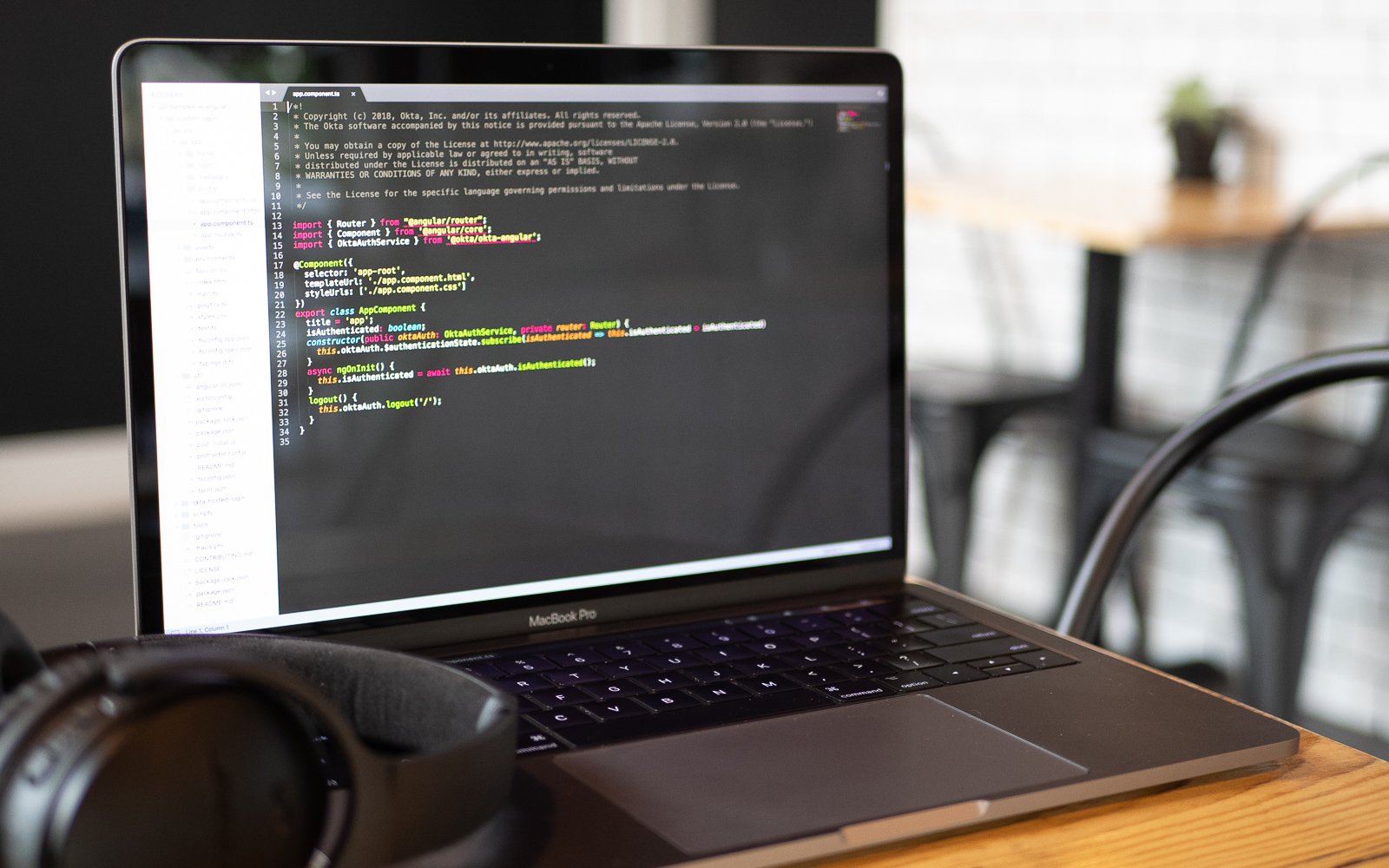
Technology moves fast these days. It can be challenging to keep up with the latest trends as well as new releases of your favorite projects. I’m here to help! Spring Boot and Angular are two of my favorite projects, so I figured I’d write y’all a guide to show you how to build and secure a basic app using their latest and greatest releases. In Spring Boot, the most significant change in 2.0 is its...
Secure your SPA with Spring Boot and OAuth
If you have a JavaScript single-page application (SPA) that needs to securely access resources from a Spring Boot application, you likely want to use the OAuth 2.0 implicit flow! With this flow your client will send a bearer token with each request and your server side application will verify the token with an Identity Provider (IdP). This allows your resource server to trust that your client is authorized to make the request. In OAuth terms...
Play Zork, Learn OAuth
In the early ’80s, some of the best “video” games were text-based adventures. These games would print out descriptive text of your surroundings and you would interact with the game using simple, but natural language commands like: “go north” or “take sword”. Fast forward some 30 years and a specification for an authorization framework called OAuth 2.0 was published. This framework allows an application to receive a token from an external party (like Okta) that...
Use OpenID Connect Support with JHipster
Single sign-on (SSO) is a feature that most developers don’t care about when building one-off applications for clients or themselves. However, when developing apps for their company, which will be used by employees of their business, they often need to hook into an existing identity provider. It might be Active Directory (AD), LDAP, or a myriad of other systems. Okta provides SSO for many companies around the world and allows them to configure AD and...
Add Role-Based Access Control to Your App with Spring Security and Thymeleaf
User management functions are required by a wide variety of apps and APIs, and it’s a common use-case to partition access to parts of an application according to roles assigned to a user. This is the basis of role-based access control (RBAC). Okta manages these roles with groups. Users can belong to one or more groups. With the Okta Spring Security integration, these groups are automatically mapped to roles that can be called out in...
NoSQL Options for Java Developers, Part II
Last month, I wrote about NoSQL Options for Java Developers. I analyzed the data available from a variety of sources (Indeed jobs, GitHub stars, Stack Overflow tags) to pick the top five options: MongoDB, Redis, Cassandra, Neo4j, and PostgreSQL. After writing this article, I shared it with a few experts I know in the Java and NoSQL communities and asked them the following questions: Do you agree with my choices of the top 5 NoSQL...
Build a Secure Notes Application with Kotlin, TypeScript, and Okta
I love my job as a developer advocate at Okta. I get to learn a lot, write interesting blog posts and create example apps with cool technologies like Kotlin, TypeScript, Spring Boot, and Angular, which I’m about to demo. When it comes to writing Hello World apps with authentication, I can whip one out in a few minutes. That isn’t because I’m a particularly good programmer, it’s because the languages, frameworks, tools, and platforms available...
NoSQL Options for Java Developers
The Java community is one I know and love, so even though a NoSQL database is rarely tied to a language I’m writing this article for you, Java developers around the world. In this article, I’ll show you several options for NoSQL databases. After exploring all the options, I’ll narrow the choices down to the top five based on Indeed Jobs, GitHub stars, and Stack Overflow tags. Then I’ll let you know if they’re supported...
Develop and Deploy Microservices with JHipster
JHipster is one of those open-source projects you stumble upon and immediately think, “Of course!” It combines three very successful frameworks in web development: Bootstrap, Angular, and Spring Boot. Bootstrap was one of the first dominant web-component frameworks. Its largest appeal was that it only required a bit of HTML and it worked! Bootstrap showed many in the Java community how to develop components for the web. It leveled the playing field in HTML/CSS development,...
Build a Microservices Architecture for Microbrews with Spring Boot
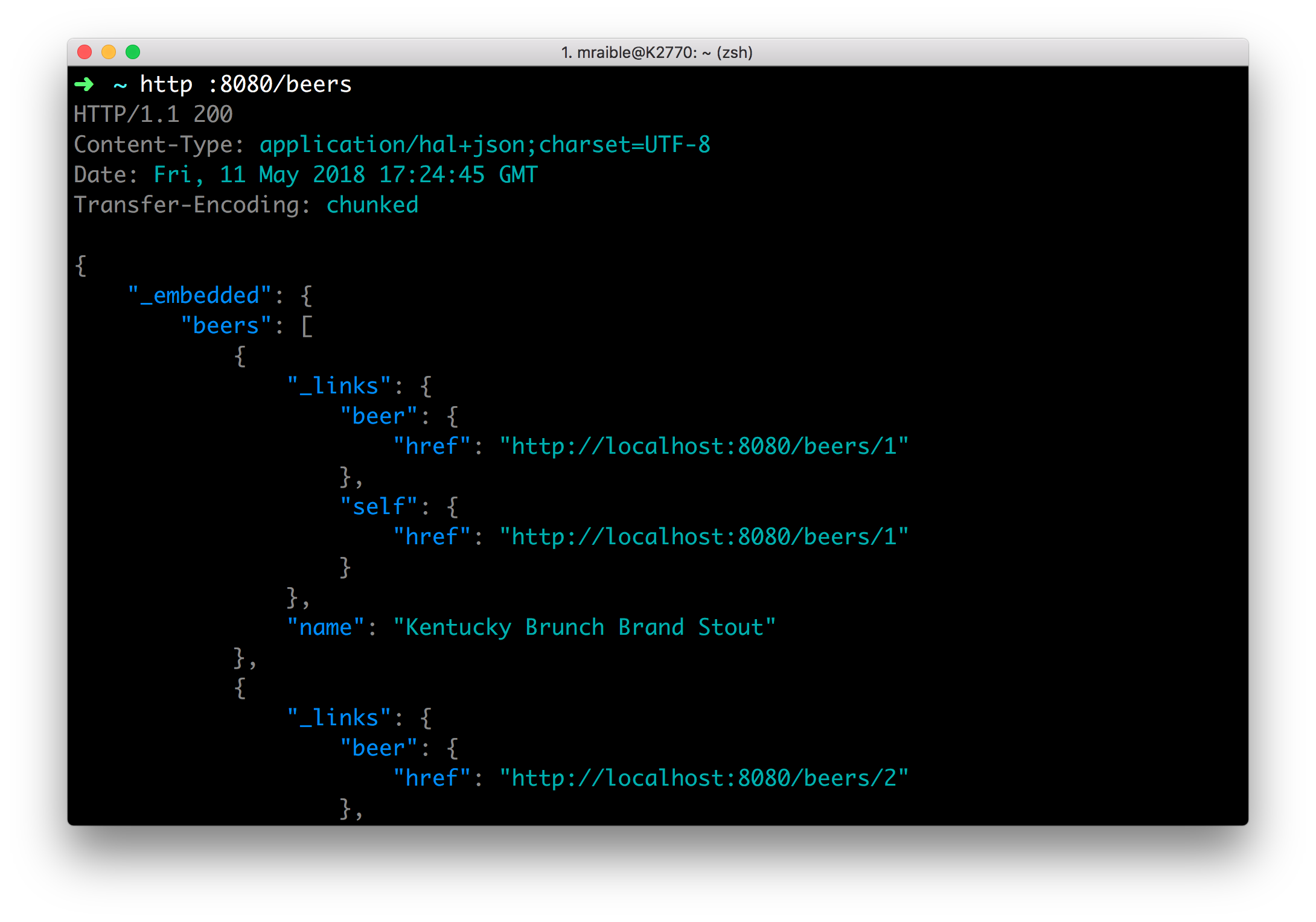
Adopting a microservice architecture provides unique opportunities to add failover and resiliency to your systems, so your components can handle load spikes and errors gracefully. Microservices make change less expensive too. It can also be a good idea when you have a large team working on a single product. Your project can likely be broken up into components that can function independently of one another. Once components can function independently, they can be built, tested,...
Add Authentication to Your Angular PWA
You’re developing a Progressive Web Application (PWA), and your service worker and web app manifest are working swimmingly. You’ve even taken the time to deploy it to a server with HTTPS, and you’re feeling pretty good about things. But wait, you don’t have any way of knowing who your users are! Don’t you want to provide them with an opportunity to authenticate and tell you who they are? Once you know who they are, you...
Tutorial: Develop a Mobile App With Ionic and Spring Boot
You already know that building APIs with Spring Boot is incredibly easy. But, your API isn’t complete without a UI, right? Well, building UIs with Ionic is pretty easy too, especially if you know Angular! Ionic is an open source framework designed to help you build mobile applications with web technologies. It started out as a framework based on AngularJS. Ionic 3.0 was recently released, with support for Angular 4, TypeScript 2.2, and lazy loading....
Build Your First Progressive Web Application with Angular and Spring Boot
An October 2016 DoubleClick report found 53% of visits are abandoned if a mobile site takes more than 3 seconds to load. That same report said the average mobile sites load in 19 seconds. According to Alex Russell in his recent talk on the state of mobile development, one of the biggest problems in mobile today is that developers use powerful laptops and desktops to develop their mobile applications, rather than using a $200 device...
Bootiful Development with Spring Boot and Angular
To simplify development and deployment, you want everything in the same artifact, so you put your Angular app “inside” your Spring Boot app, right? But what if you could create your Angular app as a standalone app and make cross-origin requests to your API? Hey guess what, you can do both! I believe that most frontend developers are used to having their apps standalone and making cross-origin requests to APIs. The beauty of having a...
Get Started with Spring Boot, OAuth 2.0, and Okta
If you’re building a Spring Boot application, you’ll eventually need to add user authentication. You can do this with OAuth 2.0 (henceforth: OAuth). OAuth is a standard that applications can use to provide client applications with “secure delegated access”. It works over HTTP and authorizes devices, APIs, servers, and applications with access tokens rather than credentials. Very simply, OAuth is a protocol that supports authorization workflows. It gives you a way to ensure that a...